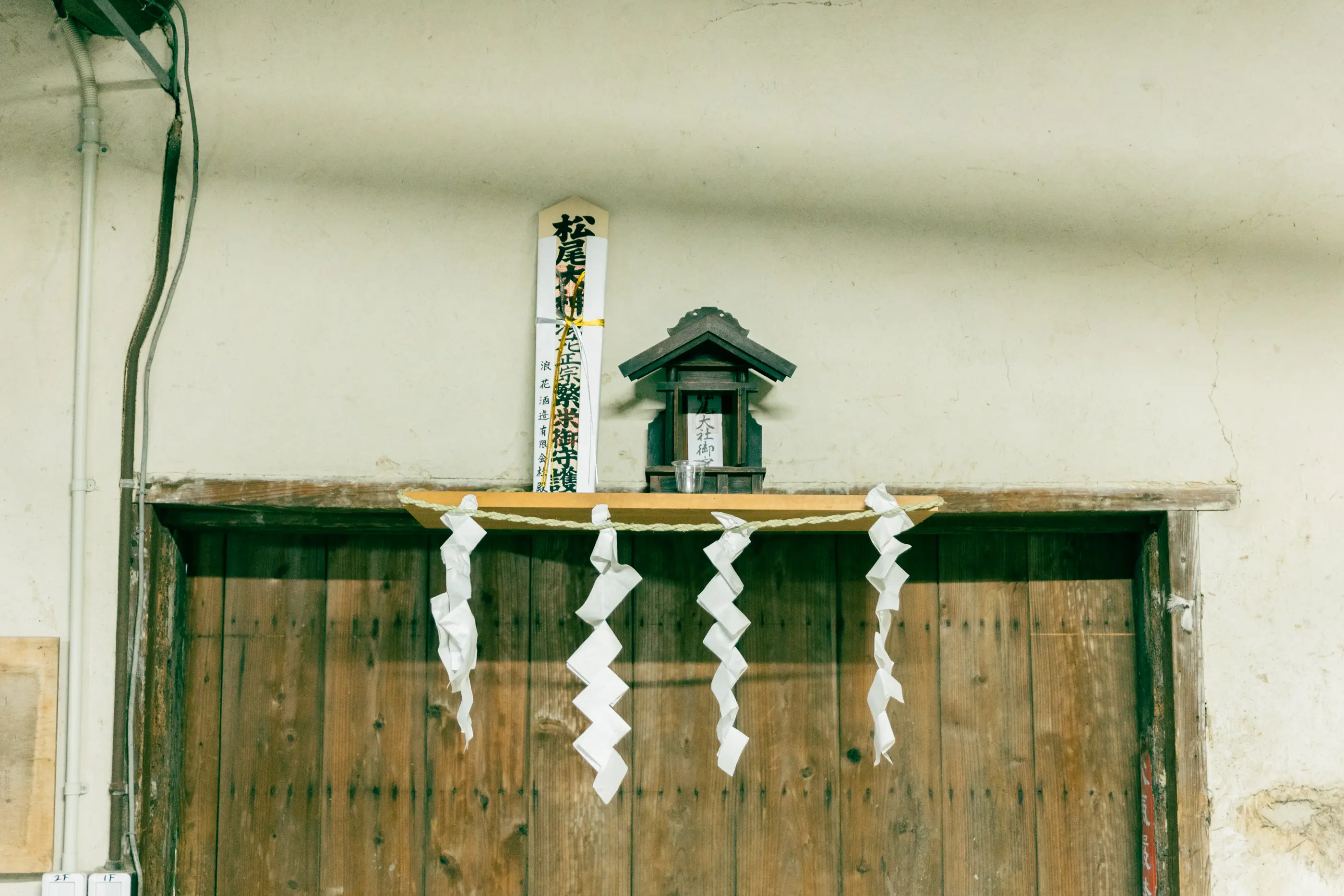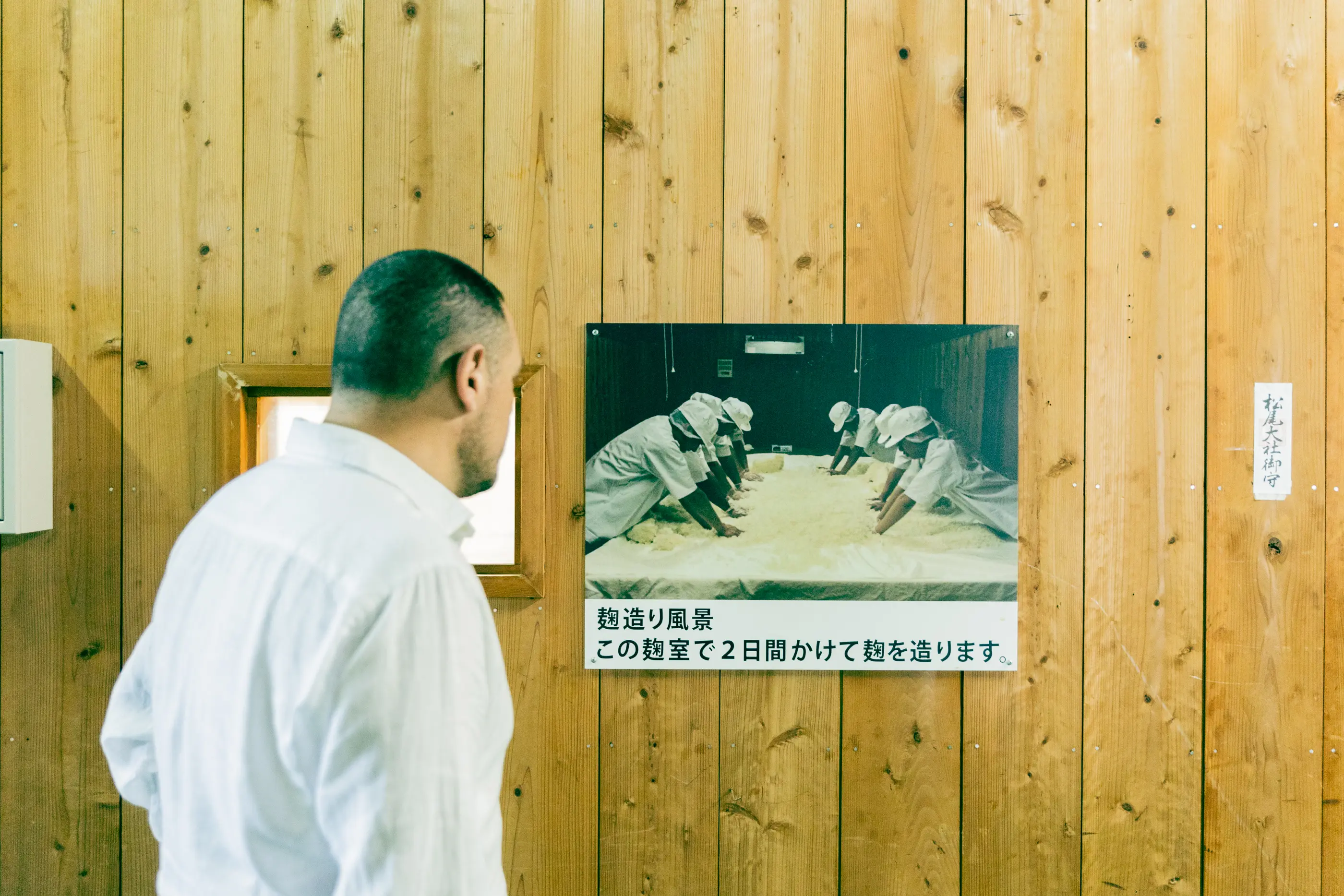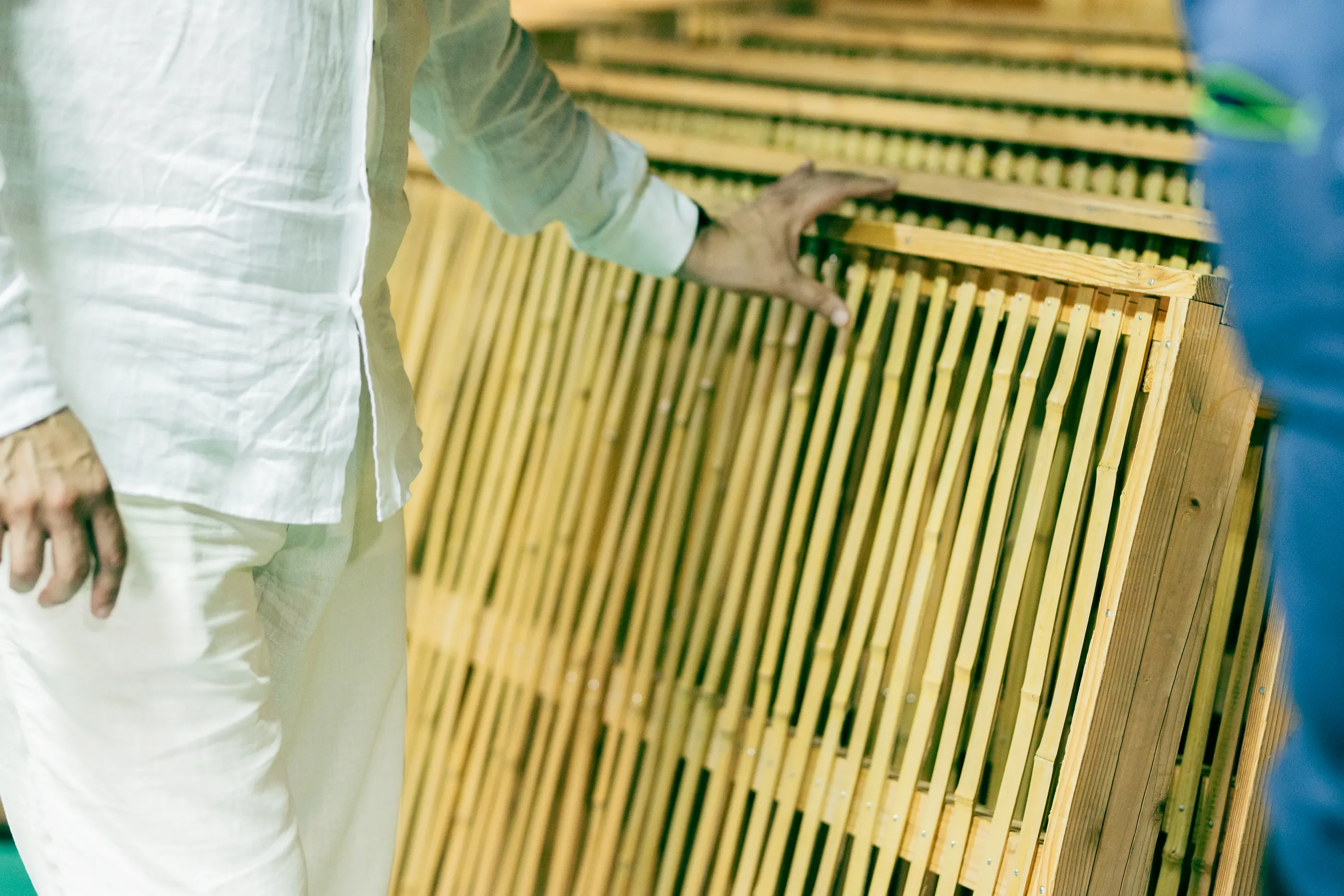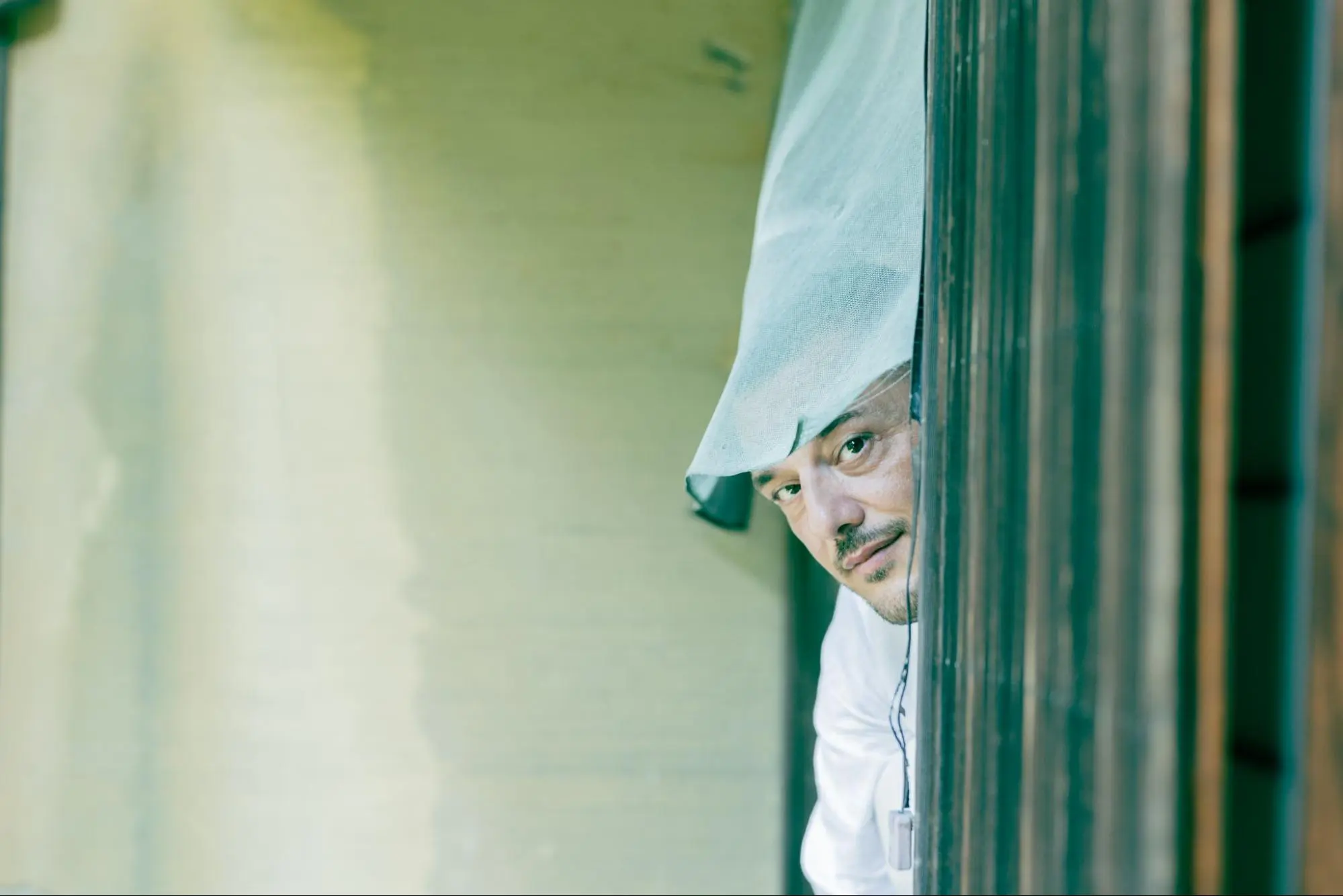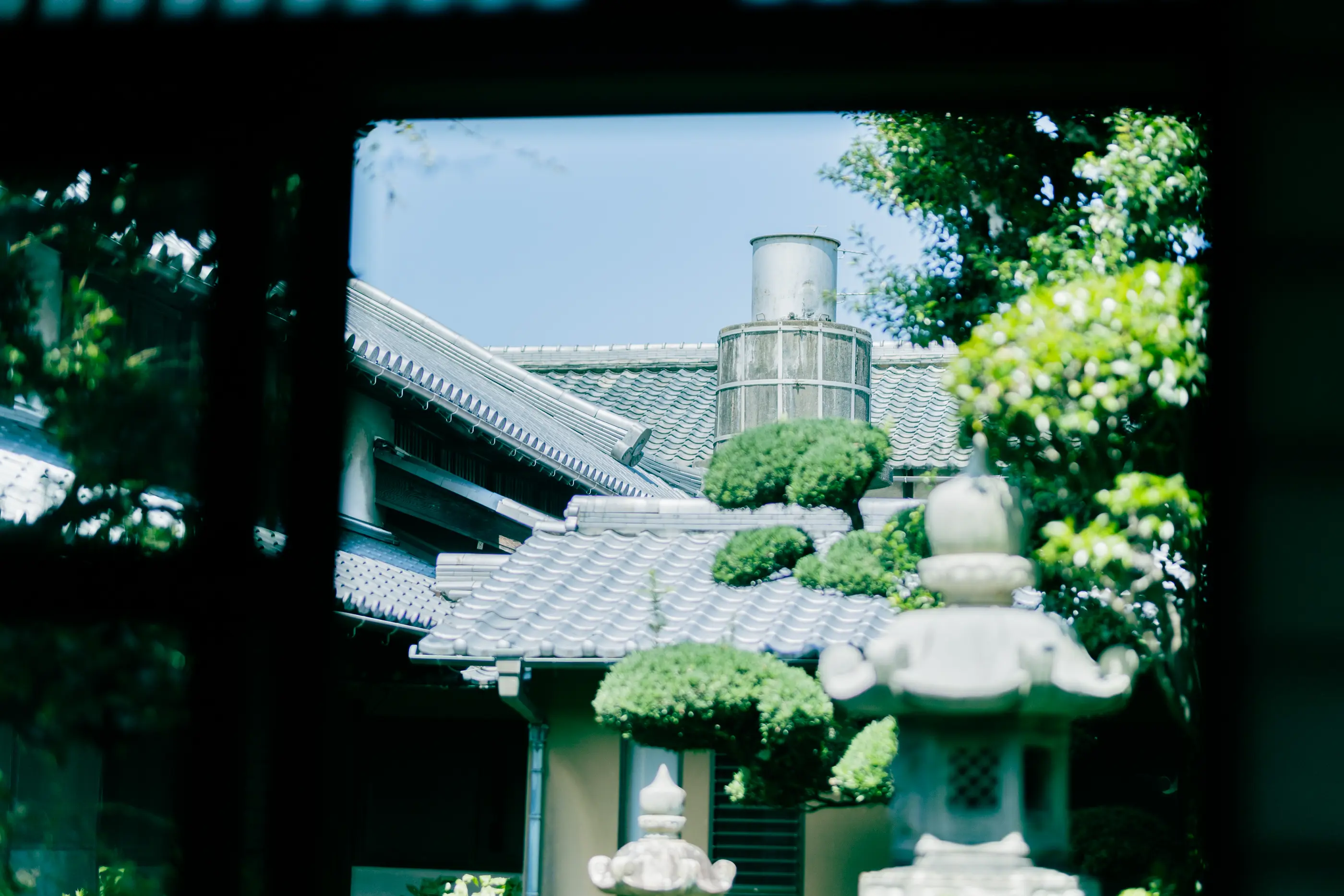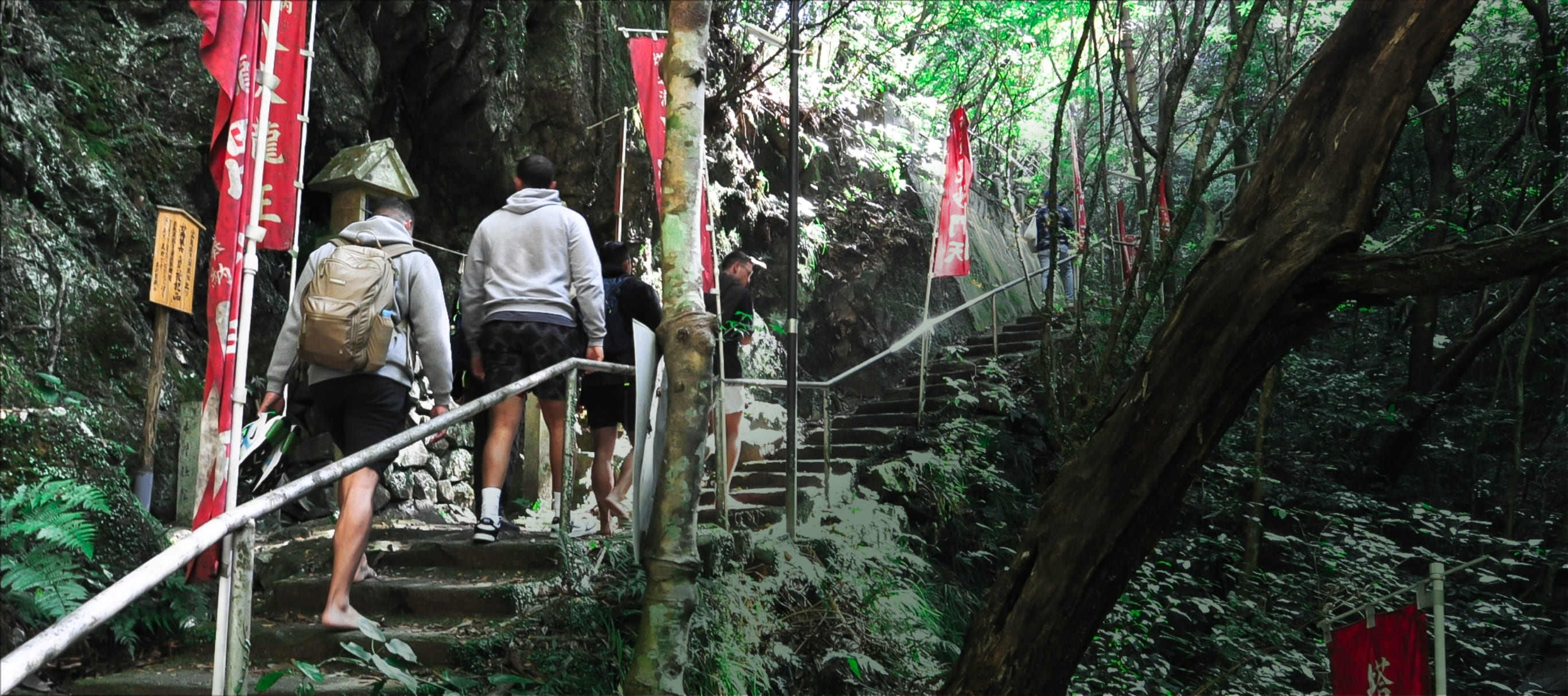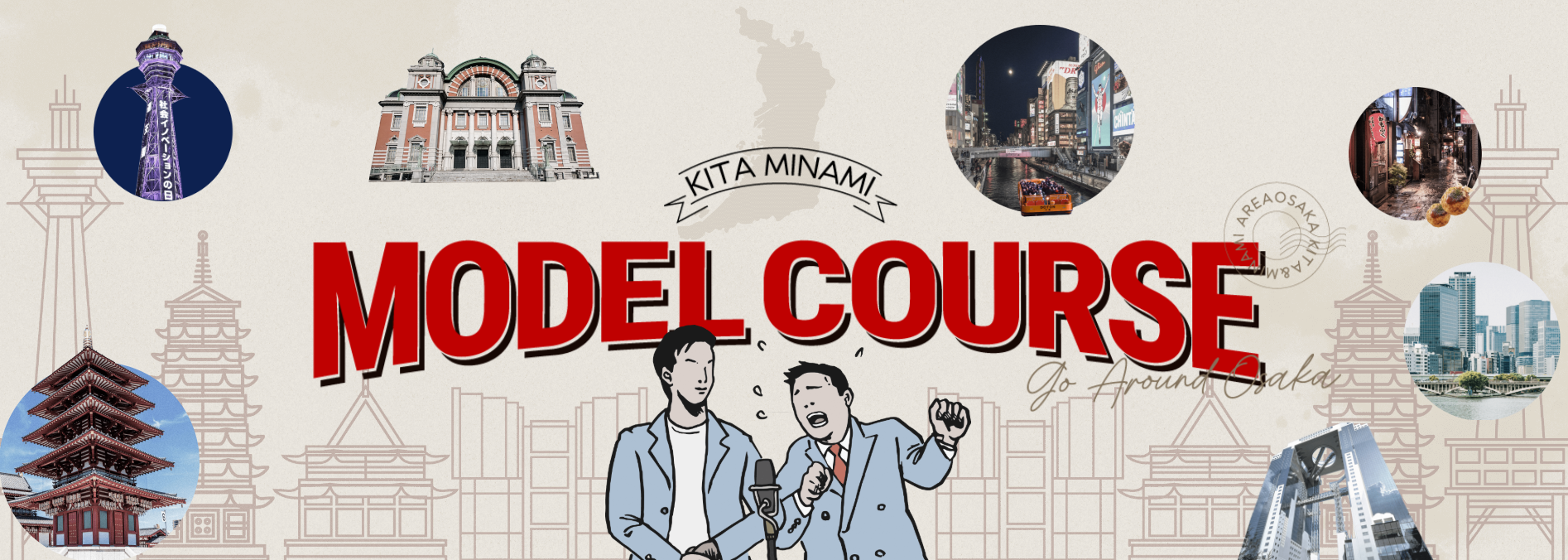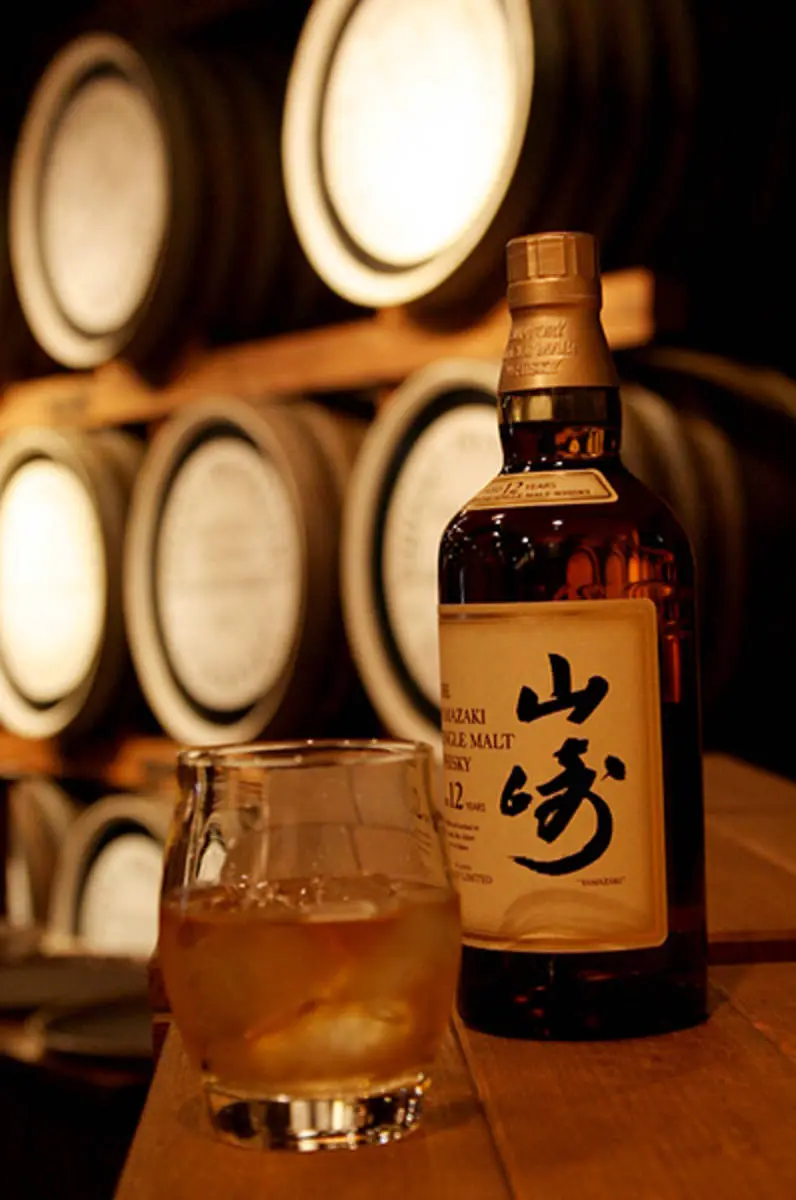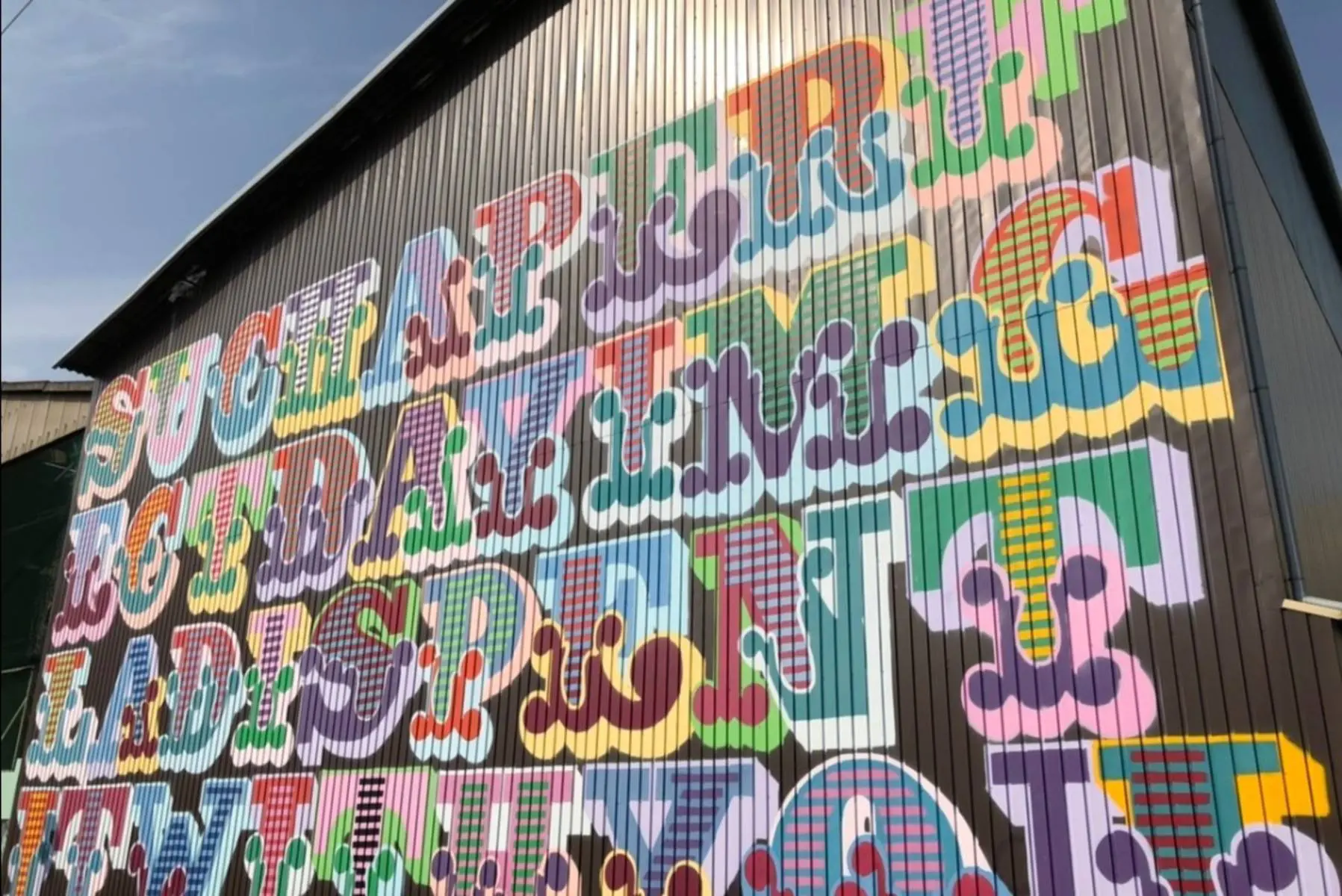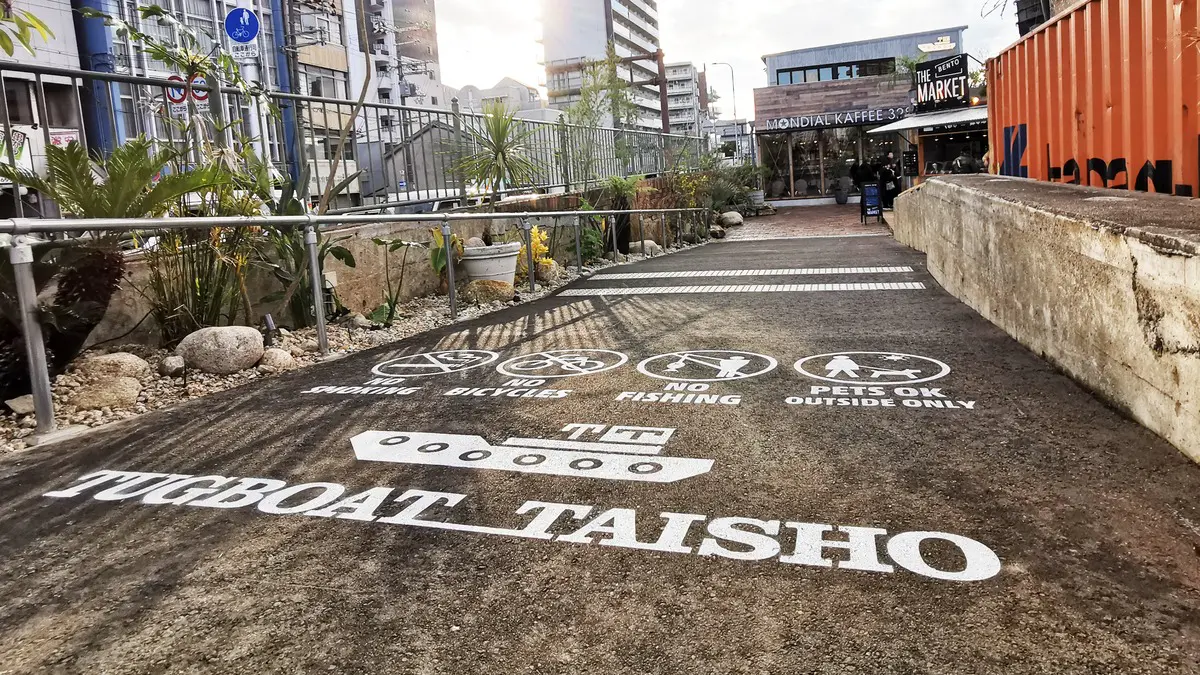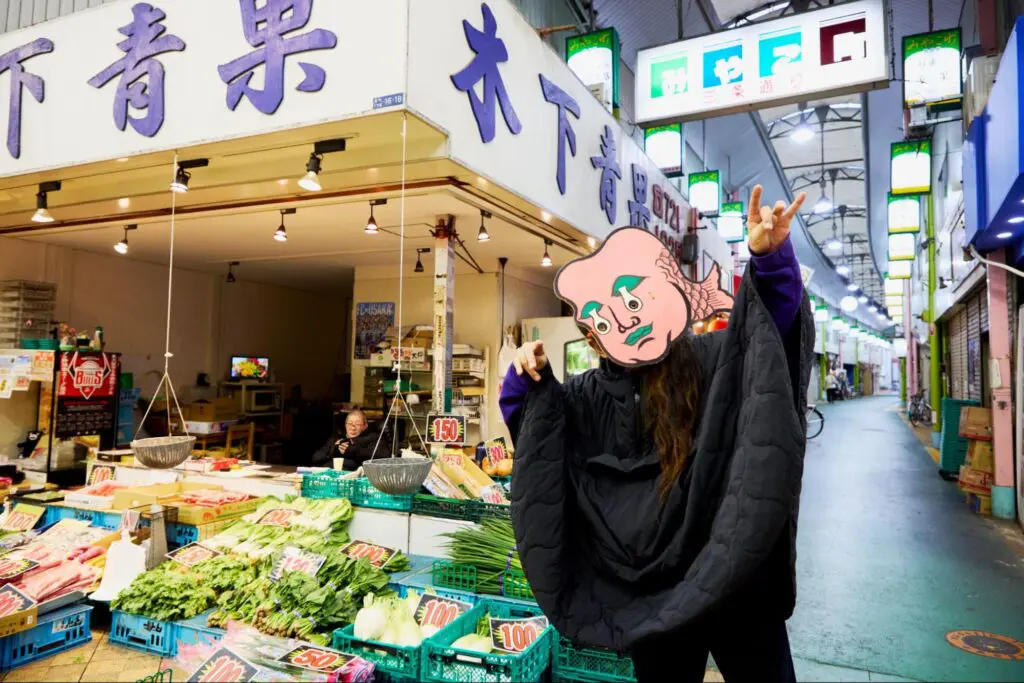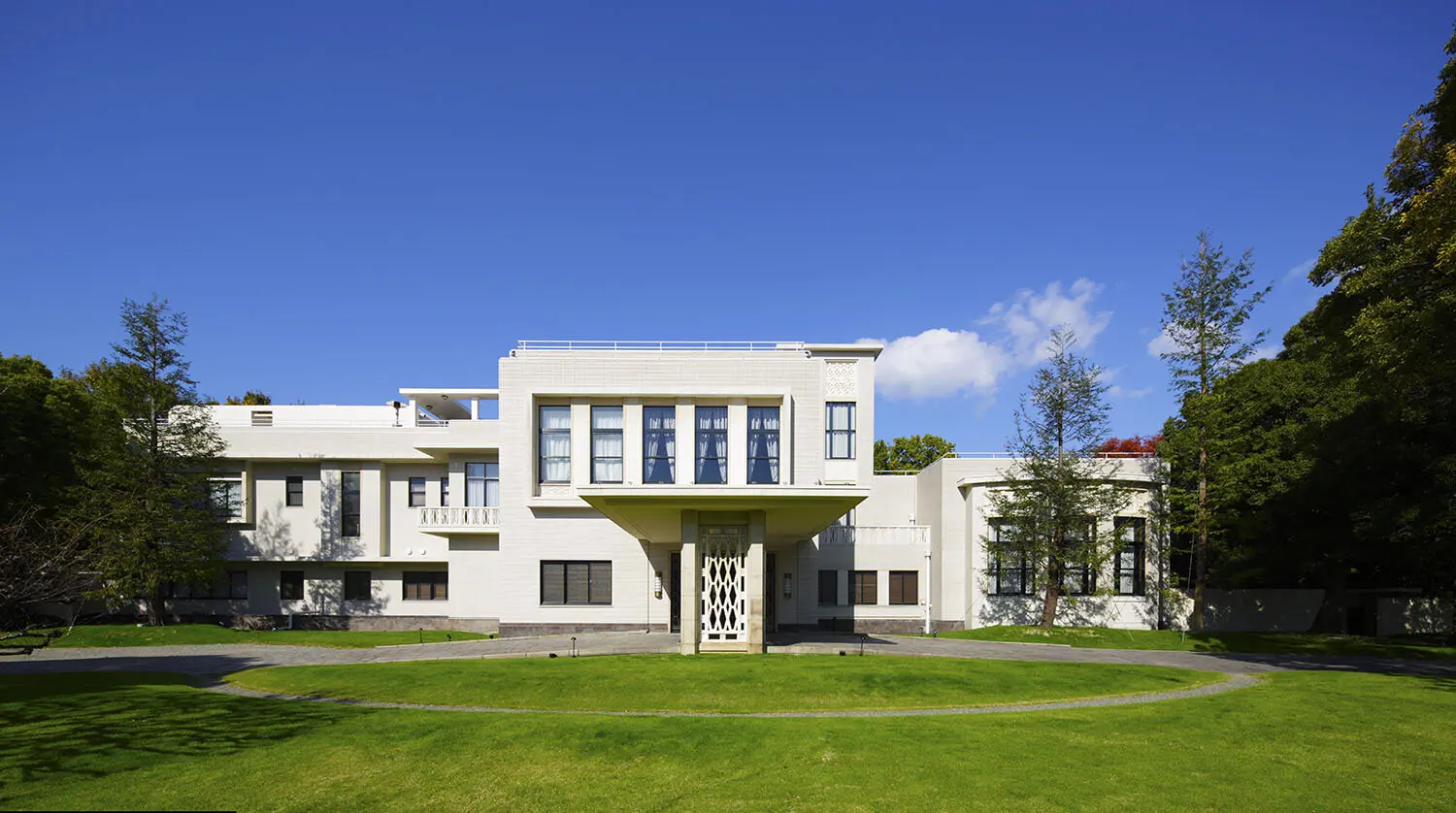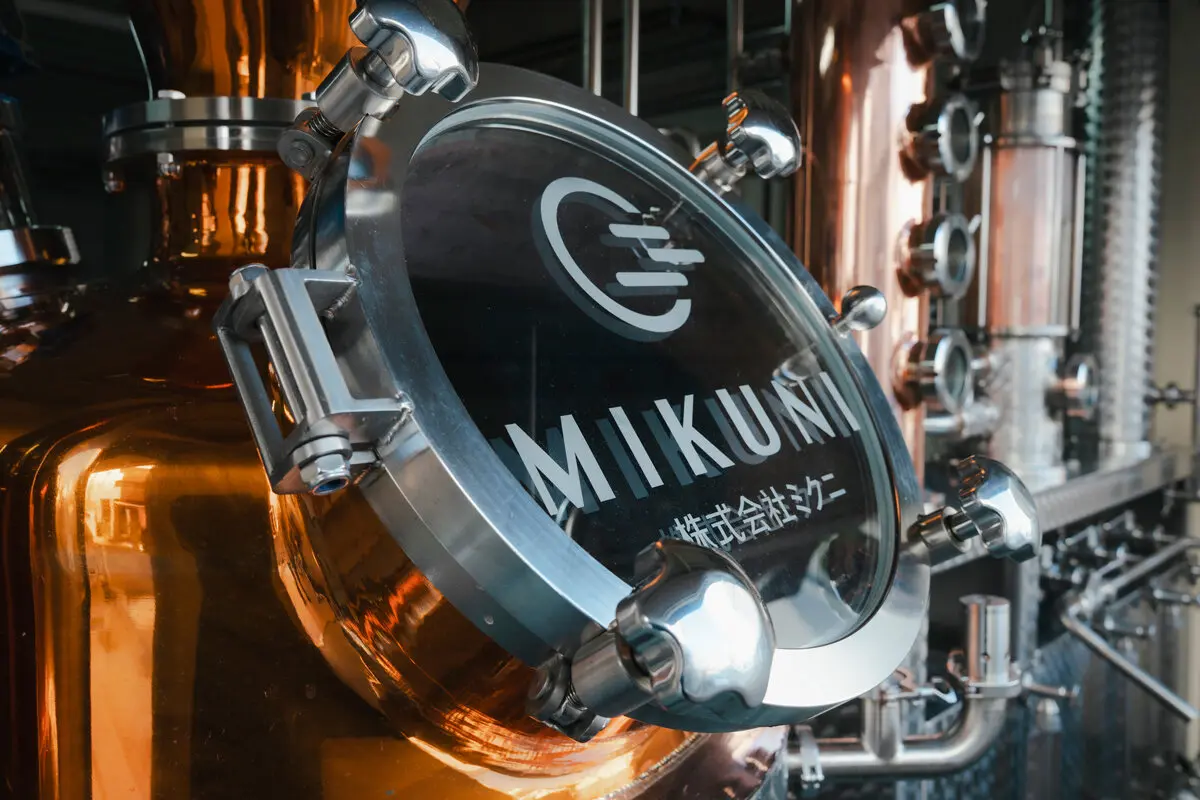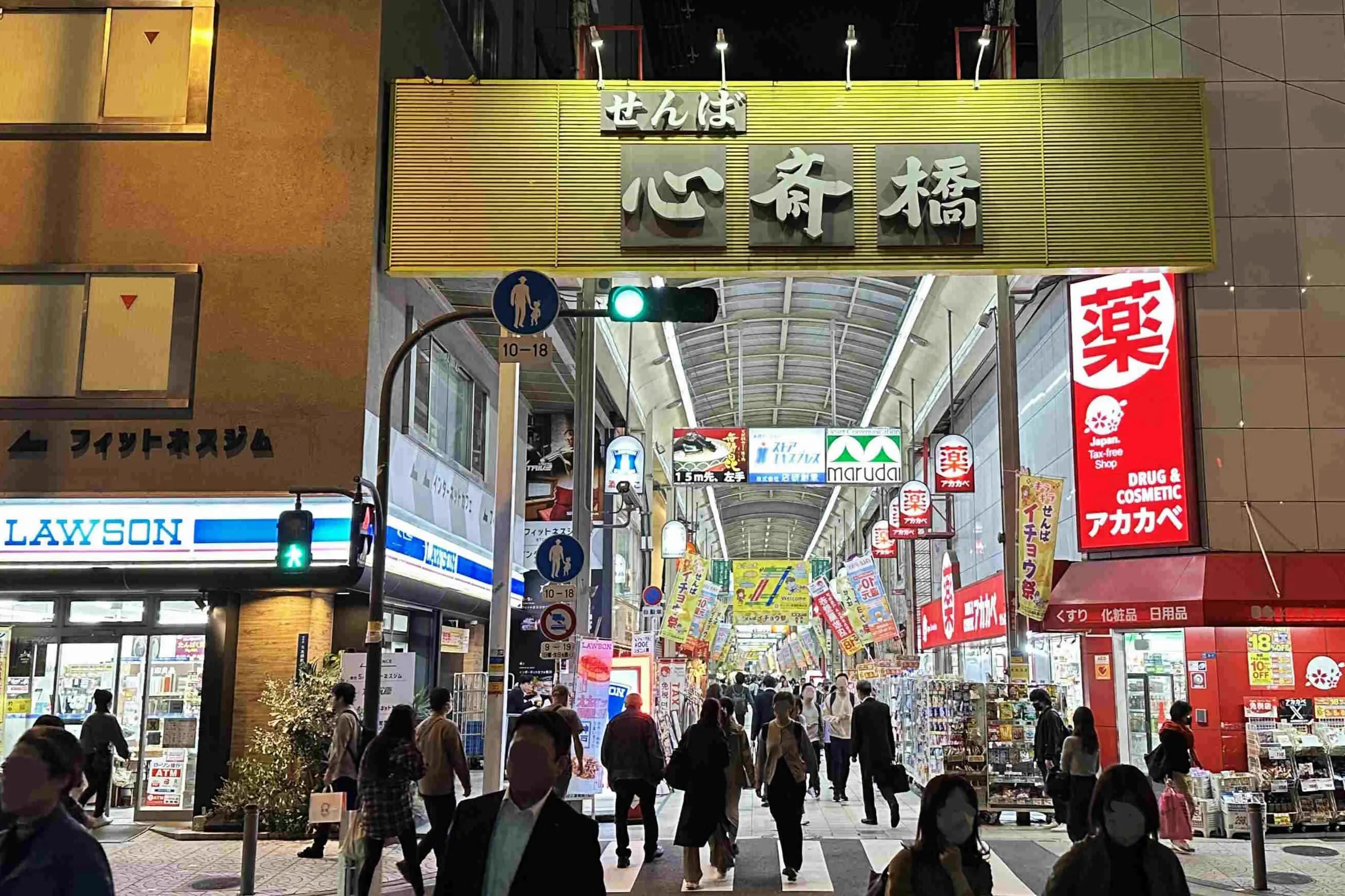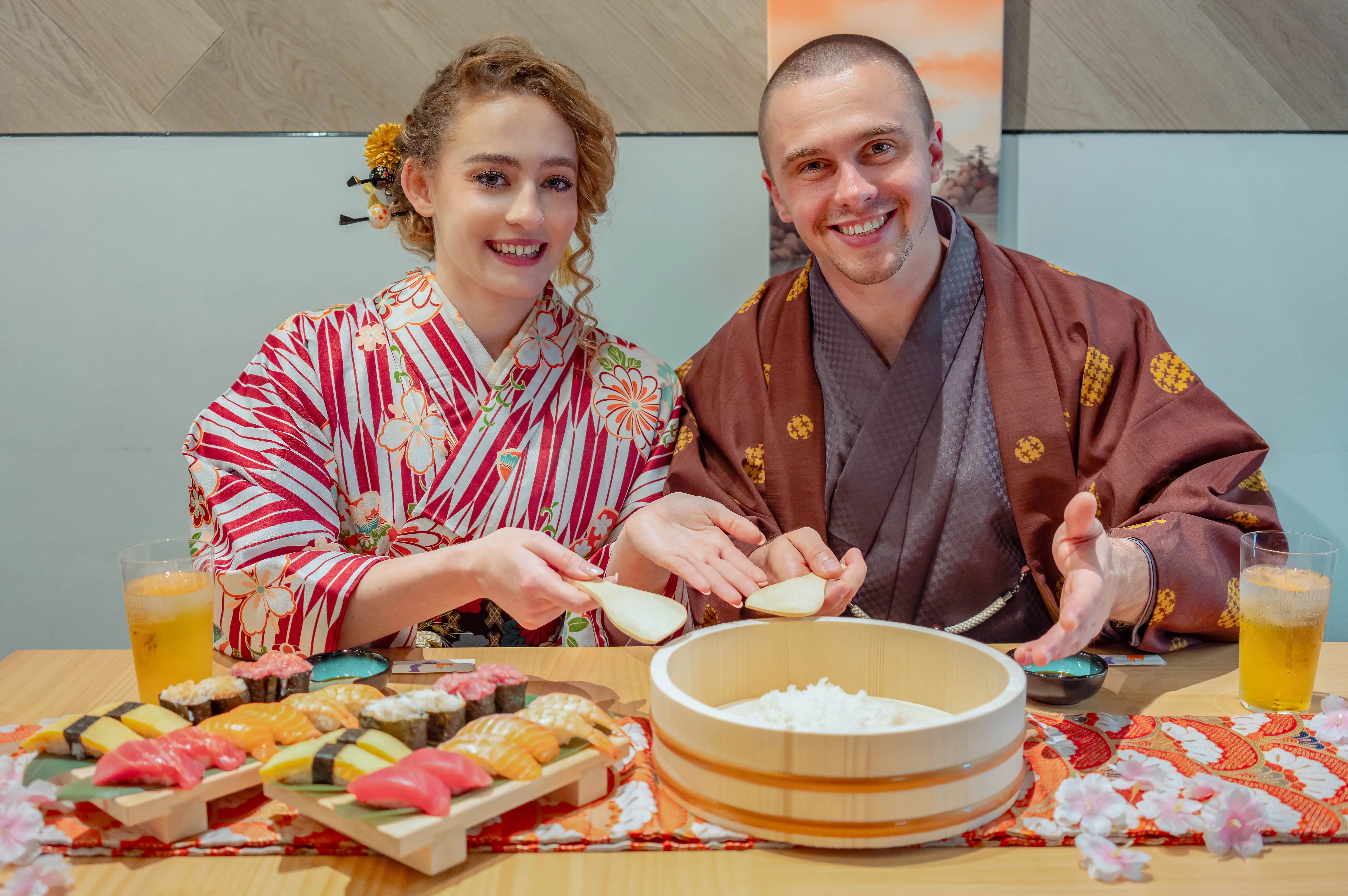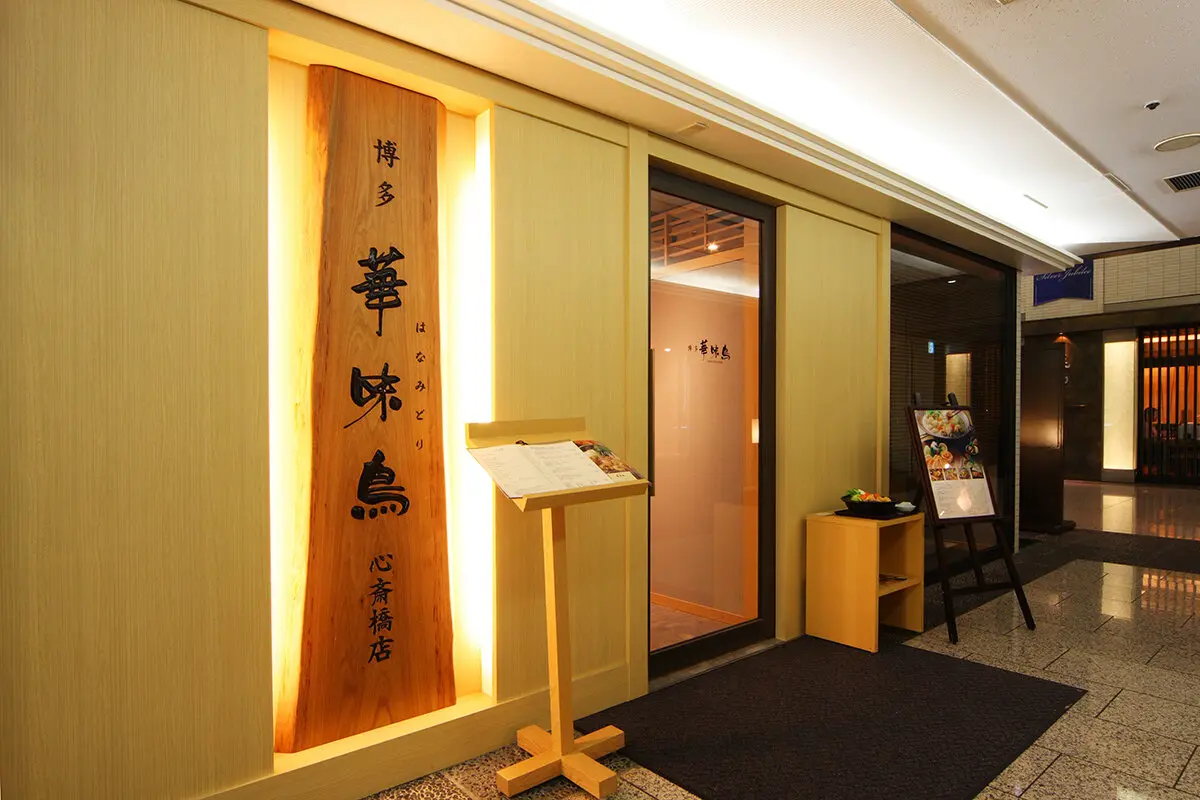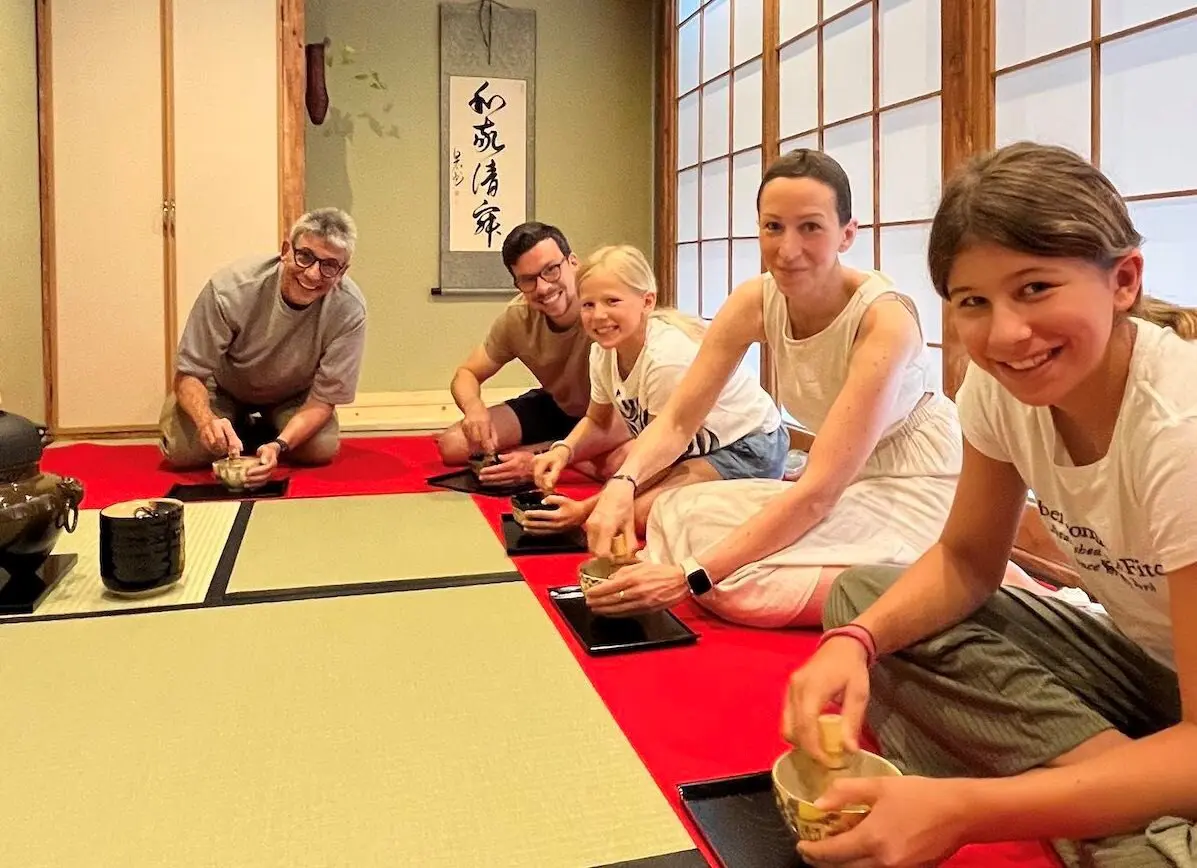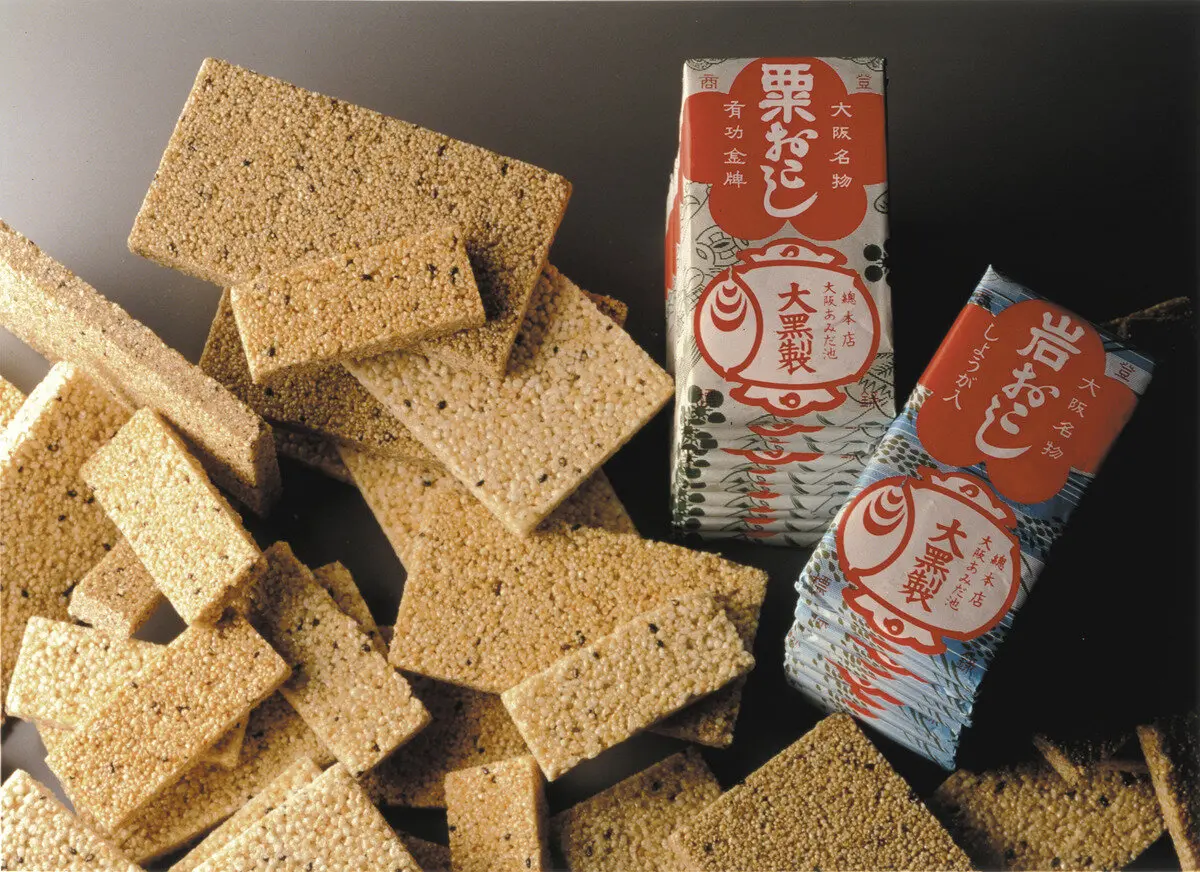Hannan City, the southernmost city in Osaka, is a peaceful town surrounded by sea and mountains. In one corner of the city is the oldest sake brewery in Osaka Prefecture, with a history of over 300 years since its founding. Giuseppe, a native of Italy, visited the city in search of sake that incorporates the rich culture of Hannan and fresh seafood.
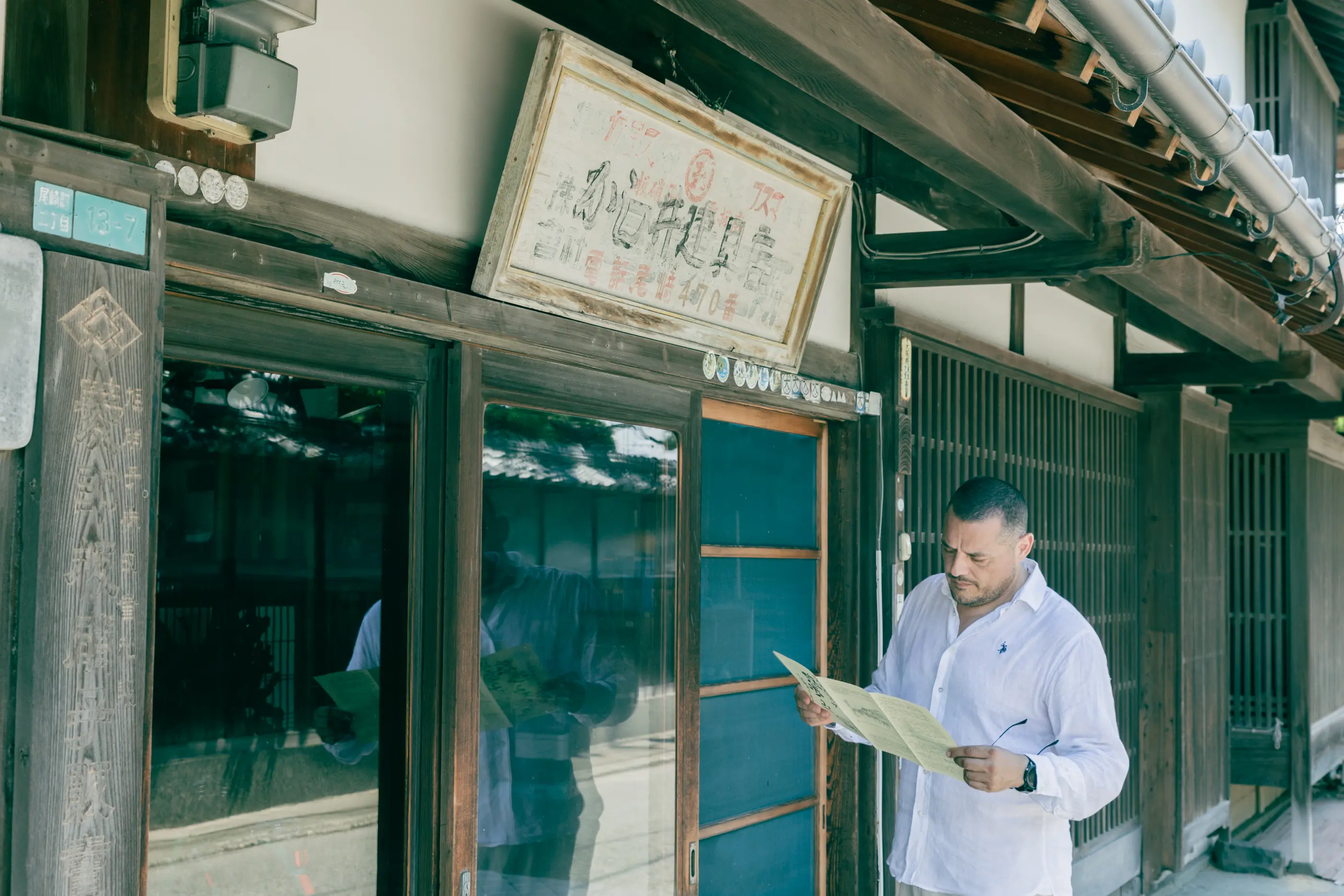
Located about 45km from central Osaka towards Wakayama, Hannan City is located further south than Kansai International Airport, just over one mountain and you'll be in Wakayama Prefecture. Hannan City is the southernmost city in Osaka Prefecture. Although it's only about an hour by train from Osaka City, one of Japan's largest cities, it's a peaceful town blessed with abundant nature, including lush beaches and the Izumi Mountains.
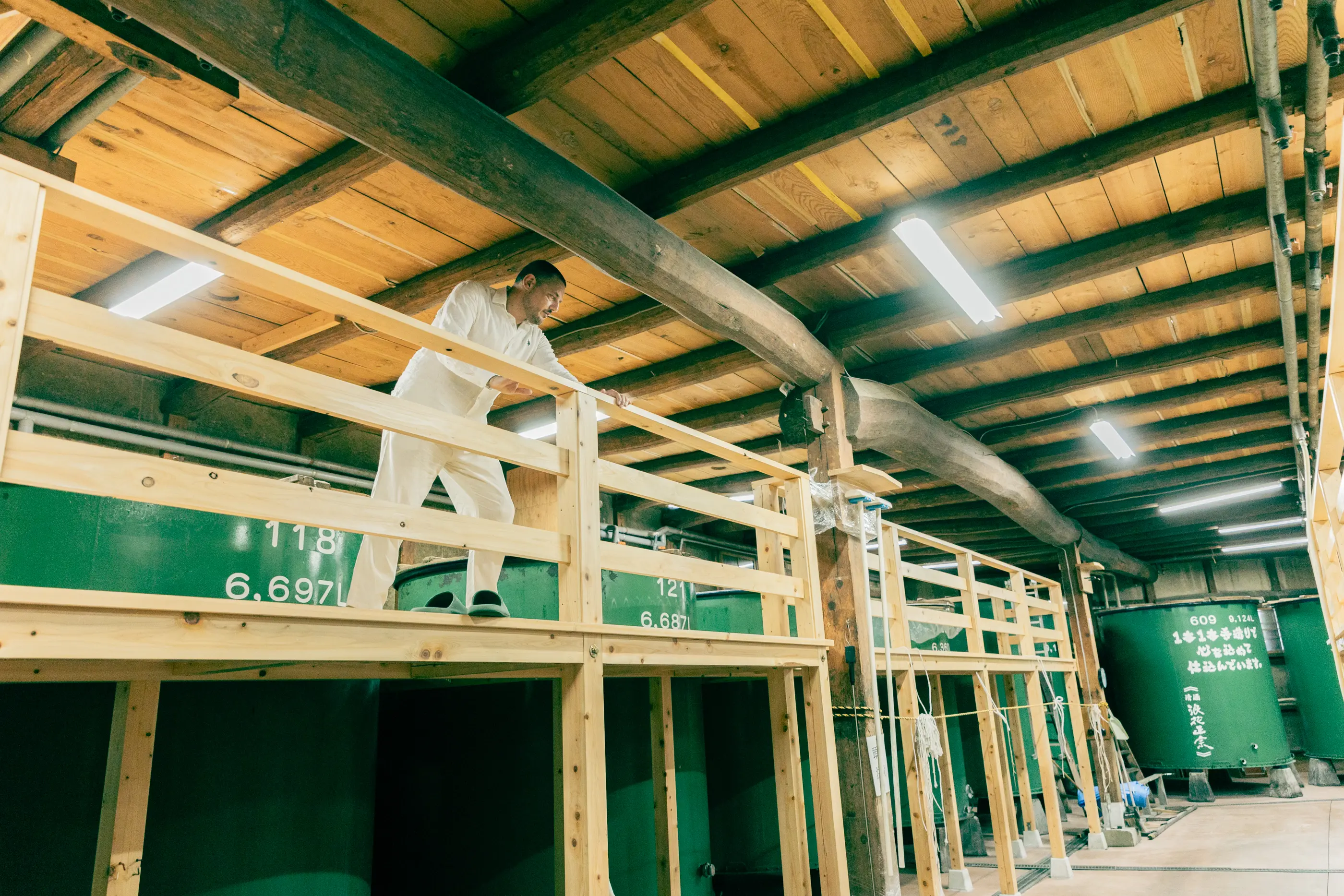
Hannan City is home to the oldest sake brewery in Osaka Prefecture, which continues to produce local sake. As of 2025, the brewery will be an established establishment with an amazing 309 years of history. You can enjoy tours and tastings at the brewery, which remains in the same condition as when it was first established.
Guide
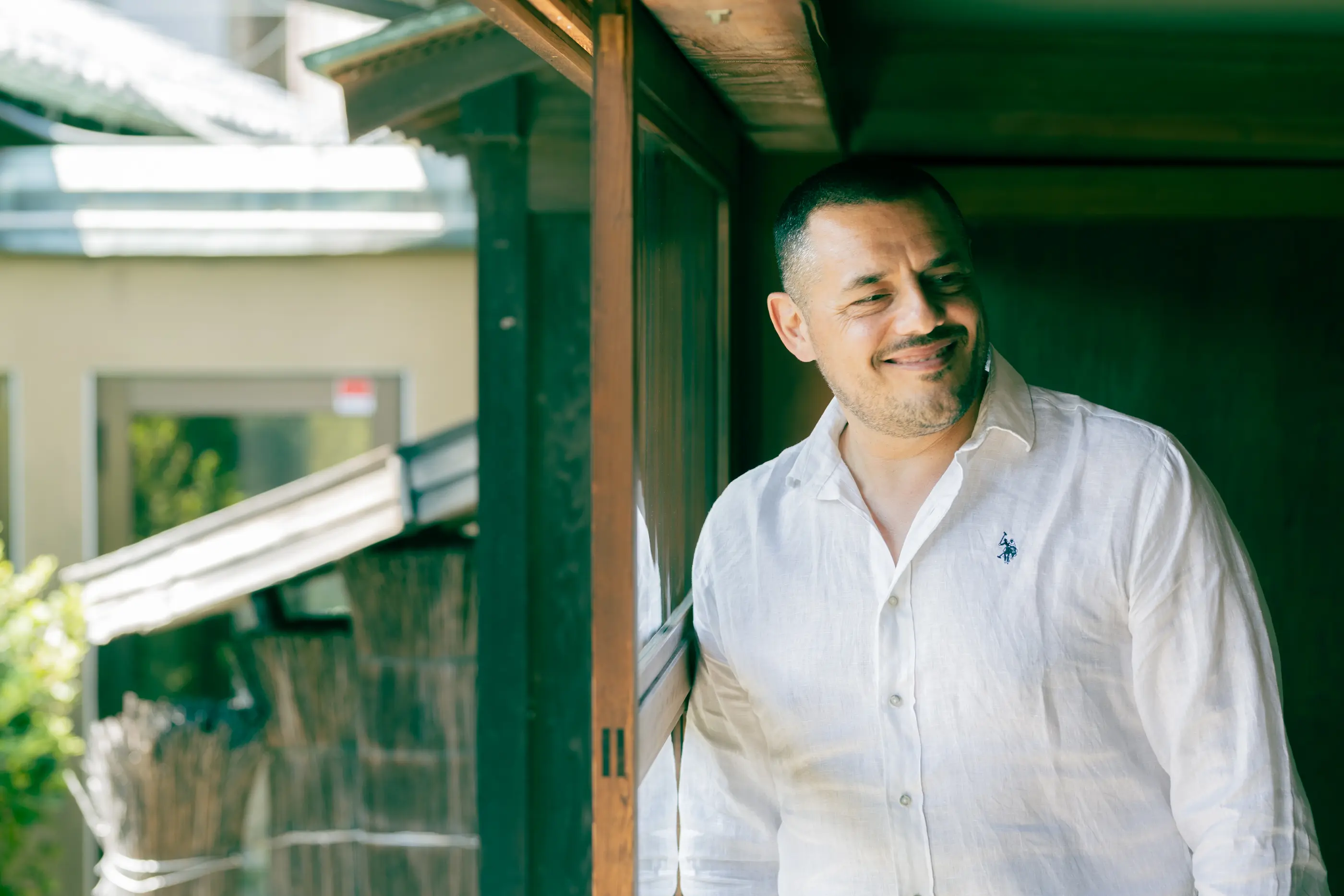
Living in Japan for the first year, he works to connect the cultures and people of Japan and Italy. He has a strong interest in culture, traditions, and lesser-known places, and travels around Japan in search of the hidden charms of the region.
Founded in 1716! Visit Naniwa Sake Brewery, the oldest sake brewery in Osaka Prefecture, and experience the traditional brewery that has been in operation for 300 years.
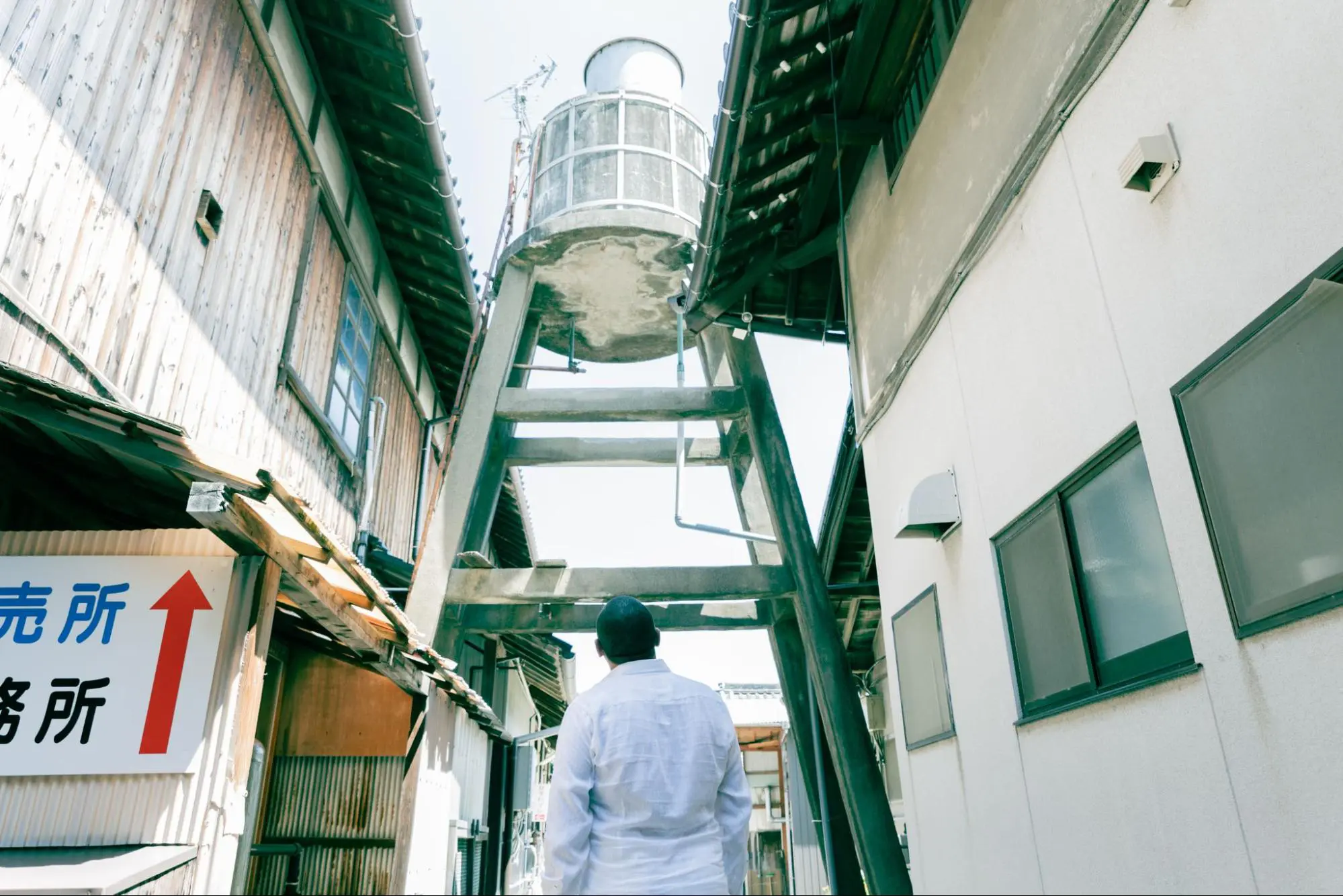
We arrived at Naniwa Sake Brewery, located about a six-minute walk from Ozaki Station on the Nankai Main Line, in a corner of the old road lined with traditional buildings.

It was founded in 1716.
In Japan, this was the year during the Edo period when Tokugawa Yoshimune became the 8th Shogun, and around the world, the War of the Spanish Succession, which was raging in European countries, ended!
...Some people may not understand what I'm saying, but Naniwa Sake Brewery is a long-established brewery with over 300 years of history. It is the oldest sake brewery in Osaka Prefecture.
However, there is no intimidating tension, and the brewery has a relaxed atmosphere that gently welcomes visitors. The ocean is nearby, so the occasional breeze carries the scent of the sea.
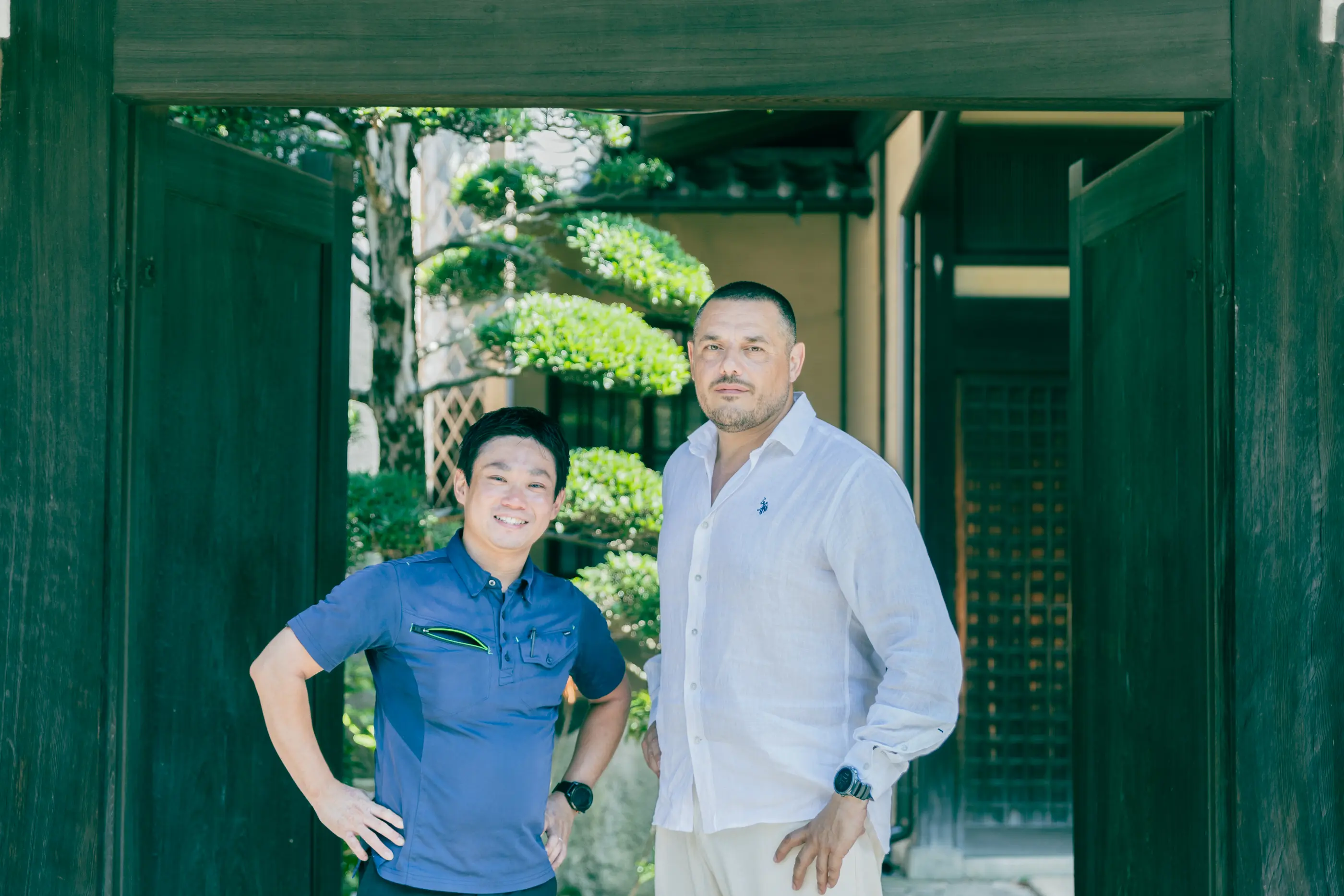
Our guide was Yoshikazu Naruko, the 11th generation brewer and representative director. He took over from his father in July 2025. He is the young representative who will carry on the history of this venerable brewery.

As soon as you enter the storehouse, you will see a large well nestled in the dirt floor. The huge stone well is filled with plenty of clear water. When you peer inside, you will find yourself exclaiming, "Wow...!" at the sheer scale of the well.
"All of Naniwa Sake Brewery's sake is made with water pumped up from this well. It's a proud well that has never dried up since the brewery was founded. The well water is underground water from the Izumi Mountains. This underground water flows through the strata in this area close to the sea, which gives it a flavor that is just the right amount of minerals," says Shigeko.
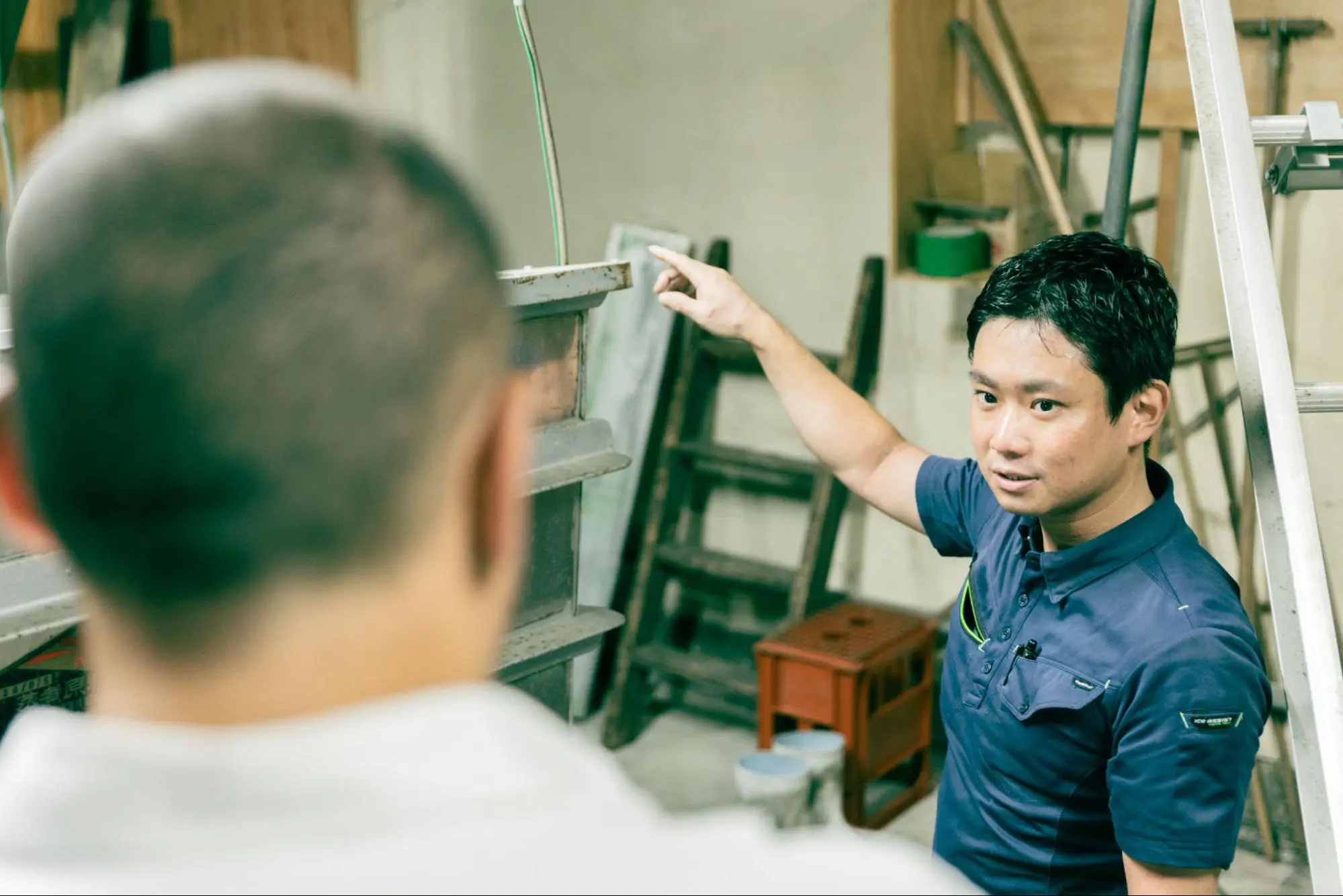
Furthermore, Shigeko explains that Naniwa Sake Brewery does not only use Yamadanishiki, the most popular sake rice, but also uses locally grown rice grown in Hannan City and neighboring cities. Some of the local rice they use is grown by hand and without pesticides, and the amount they can produce each year is very small.
"Of course, we want to preserve the flavors that have been made since ancient times, but we also want to use local rice that has not been used in sake brewing until now, and explore flavors that can only be achieved with the water and rice of this area," says Shigeko.
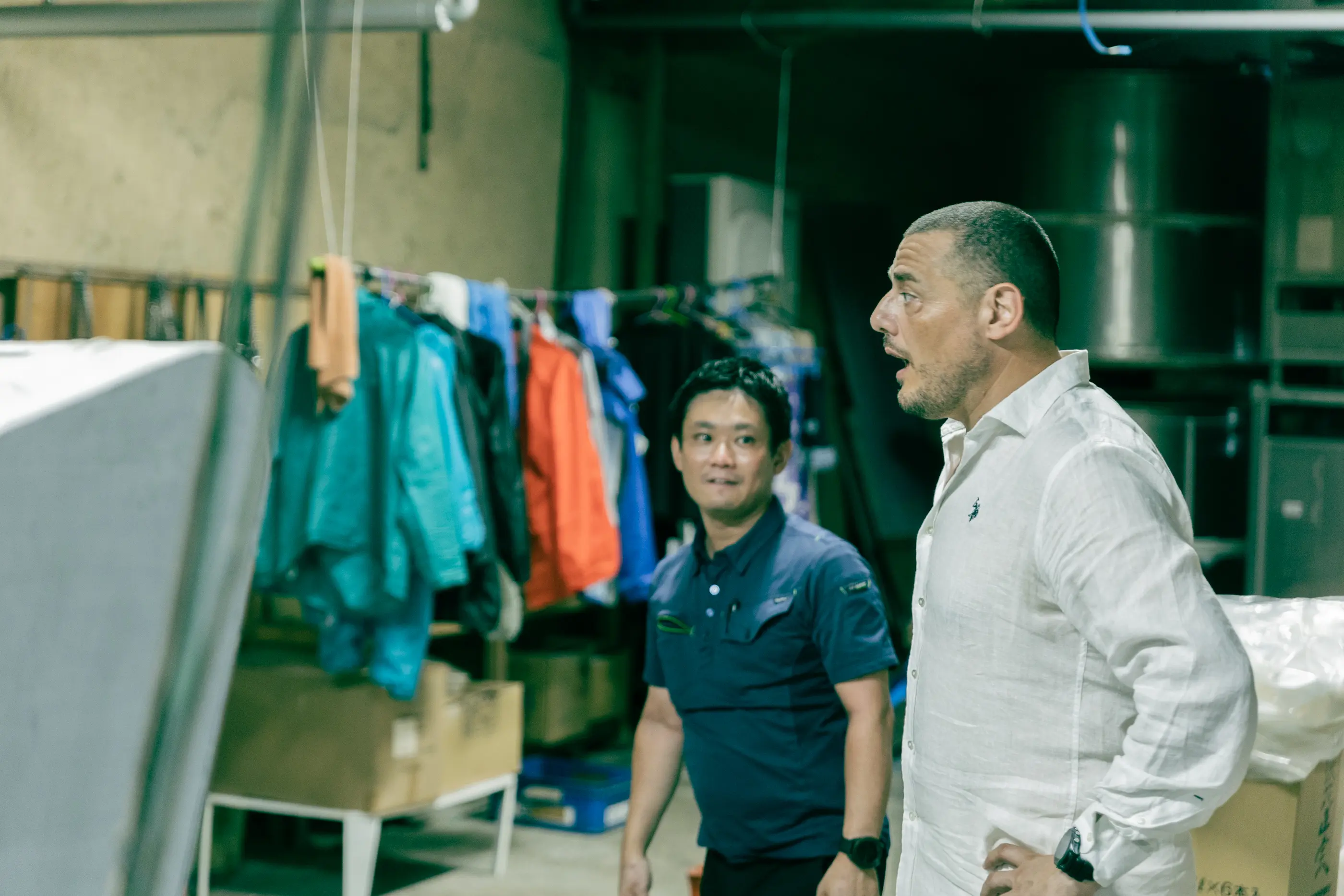
"The flavor is brewed using local water and rice. It's exactly like terroir in wine!" exclaims Giuseppe.
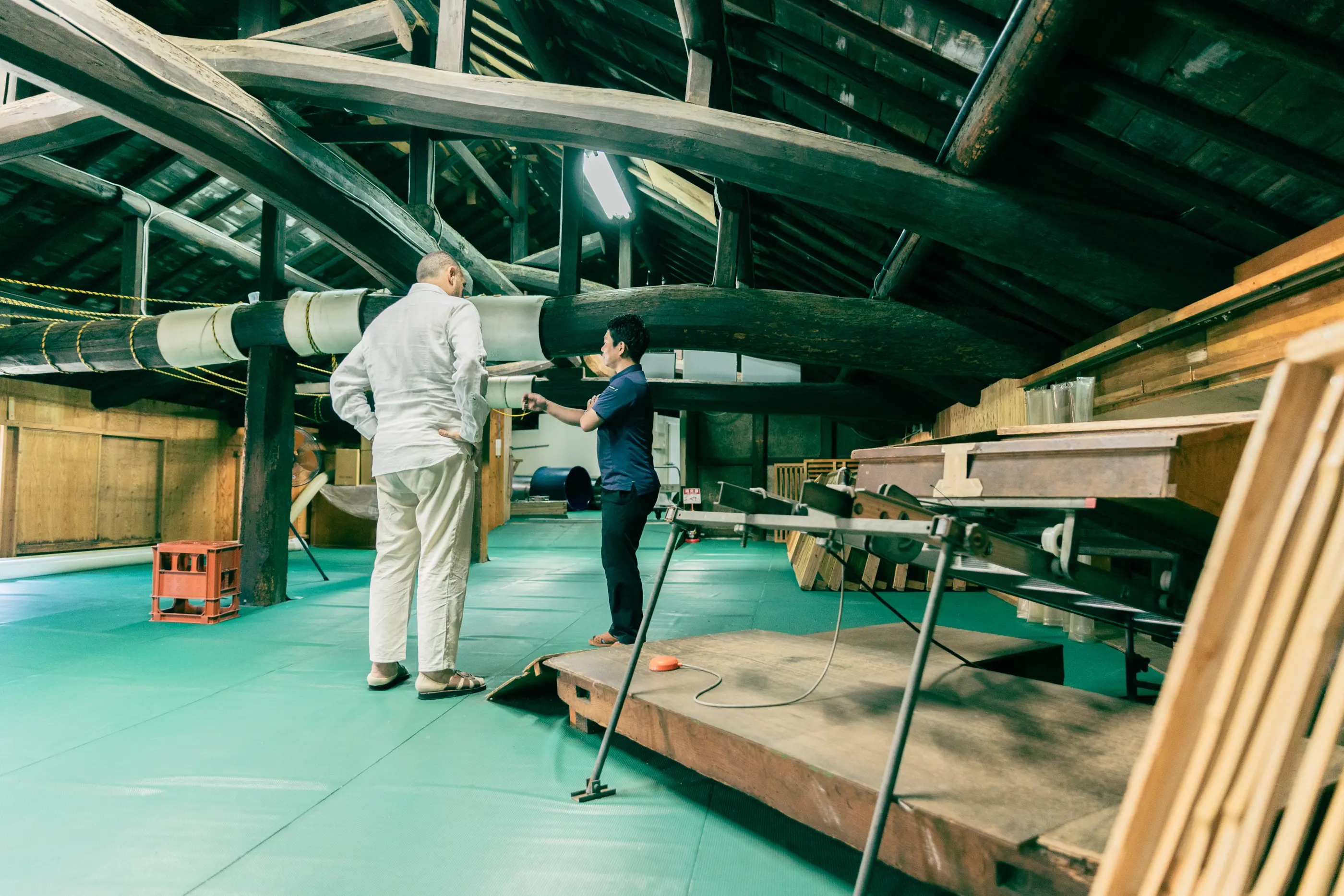
The storehouse building is designated as a national tangible cultural property and continues to be used in the same condition as when the store first opened. This is the room where steamed rice is cooled.
The impressive structure is made up of sturdy beams that are firmly joined together vertically and horizontally. These beams are made from a single huge piece of wood, making them rare to come by these days. What's more, they were assembled without the use of nails.

Japanese people in the past were shorter than they are today, so old buildings often have low ceilings even for modern Japanese people, but Giuseppe, who is tall, was able to easily reach the beams. It may be a rare opportunity to casually touch the framework that has supported the storehouse for over 300 years.
"The high level of skill of the craftsmen of the past is amazing. It's interesting because we rarely get the chance to see the ceiling structure and beams up close. So that's how it all works..."

With Naoko as our guide, we took a tour around the storehouse.
This is the koji room where koji mold is added to steamed rice and rice koji is cultivated. Sake brewing takes place in the winter, but the koji room is kept as hot as a steam bath to encourage the growth of the bacteria.
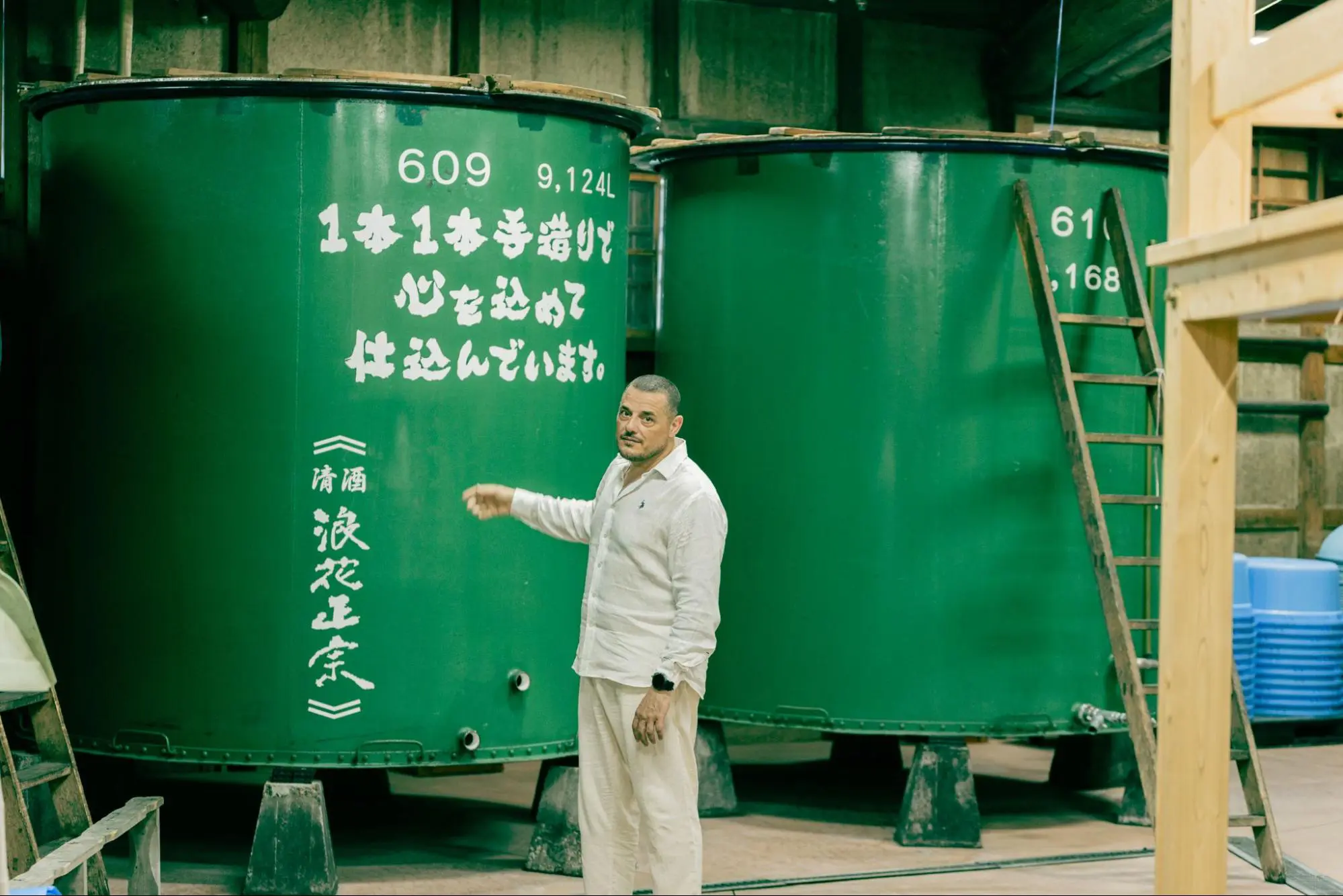
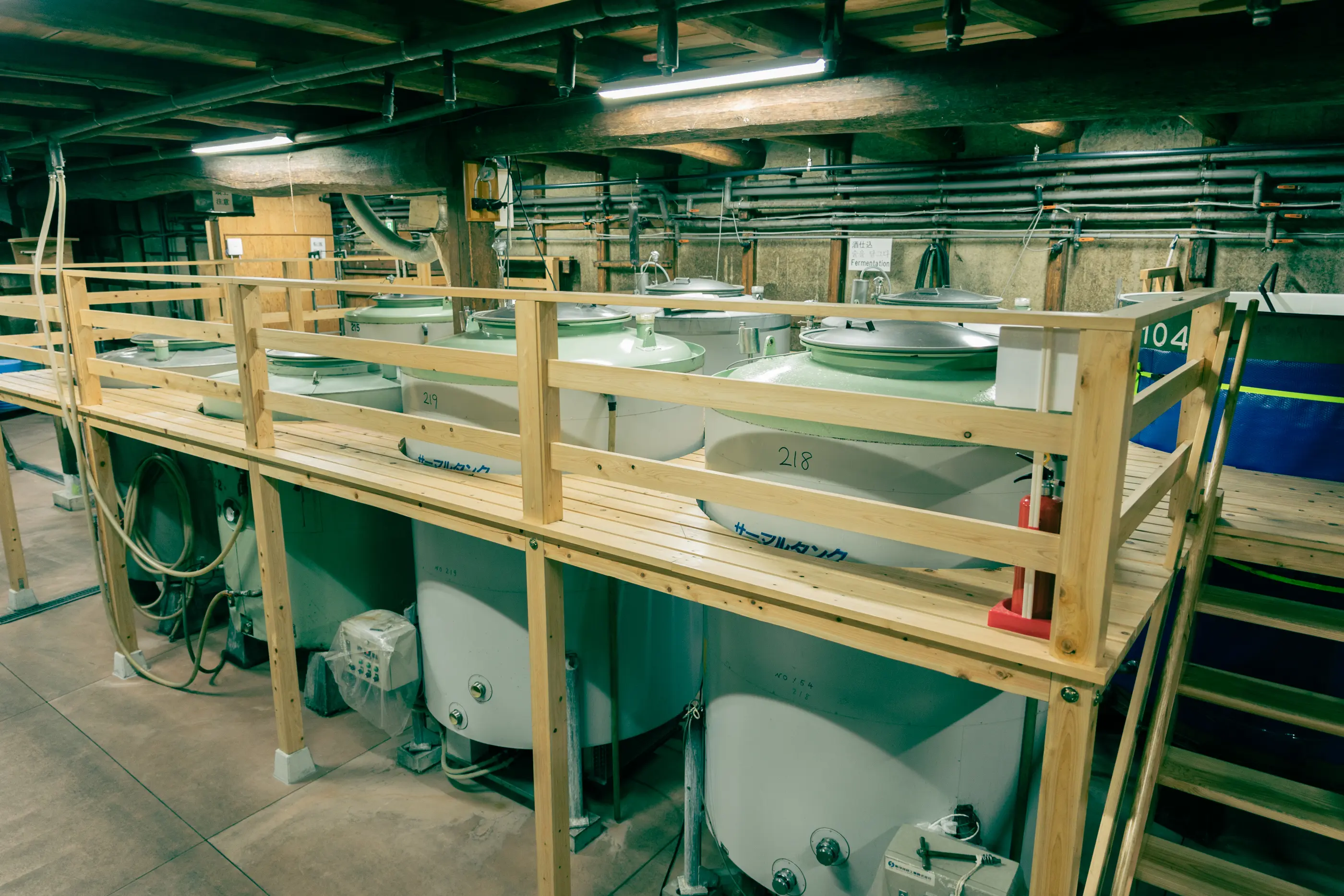
On the first floor of the brewery, there are huge tanks for storing sake, and a room with a press that squeezes the finished sake. By touring the brewery, you can get a sense of the entire process of sake brewing.
Visit a Taisho-era romantic mansion! The chairman himself might even play the koto.
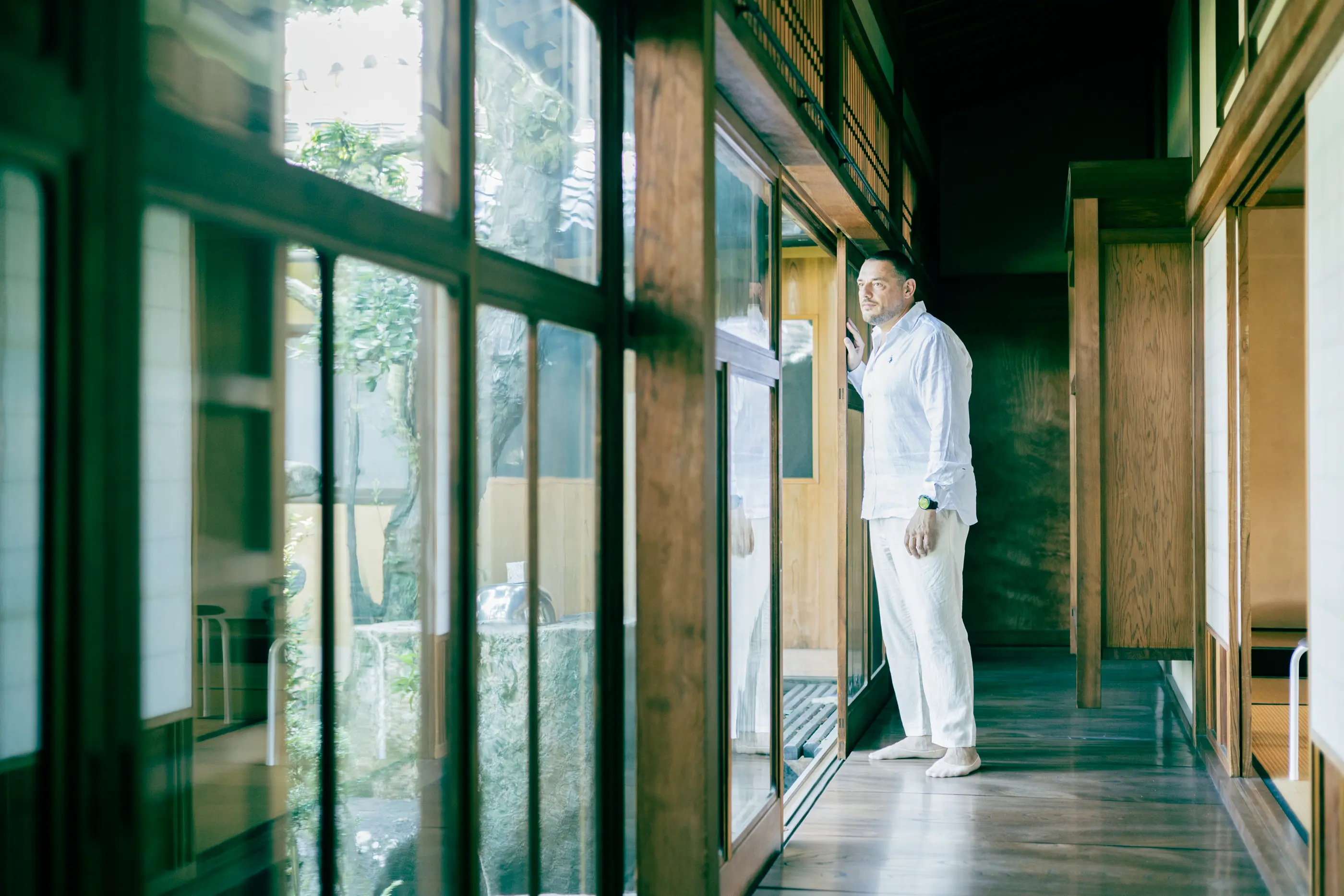
In addition to the sake brewery, you can also tour the former residence, the Naruko Family Residence, adjacent to the brewery.
Built in 1916, this large townhouse still retains the charm of the Taisho era. It is no longer used as a residence, but is open to visitors, who can actually enter the building and watch video materials.
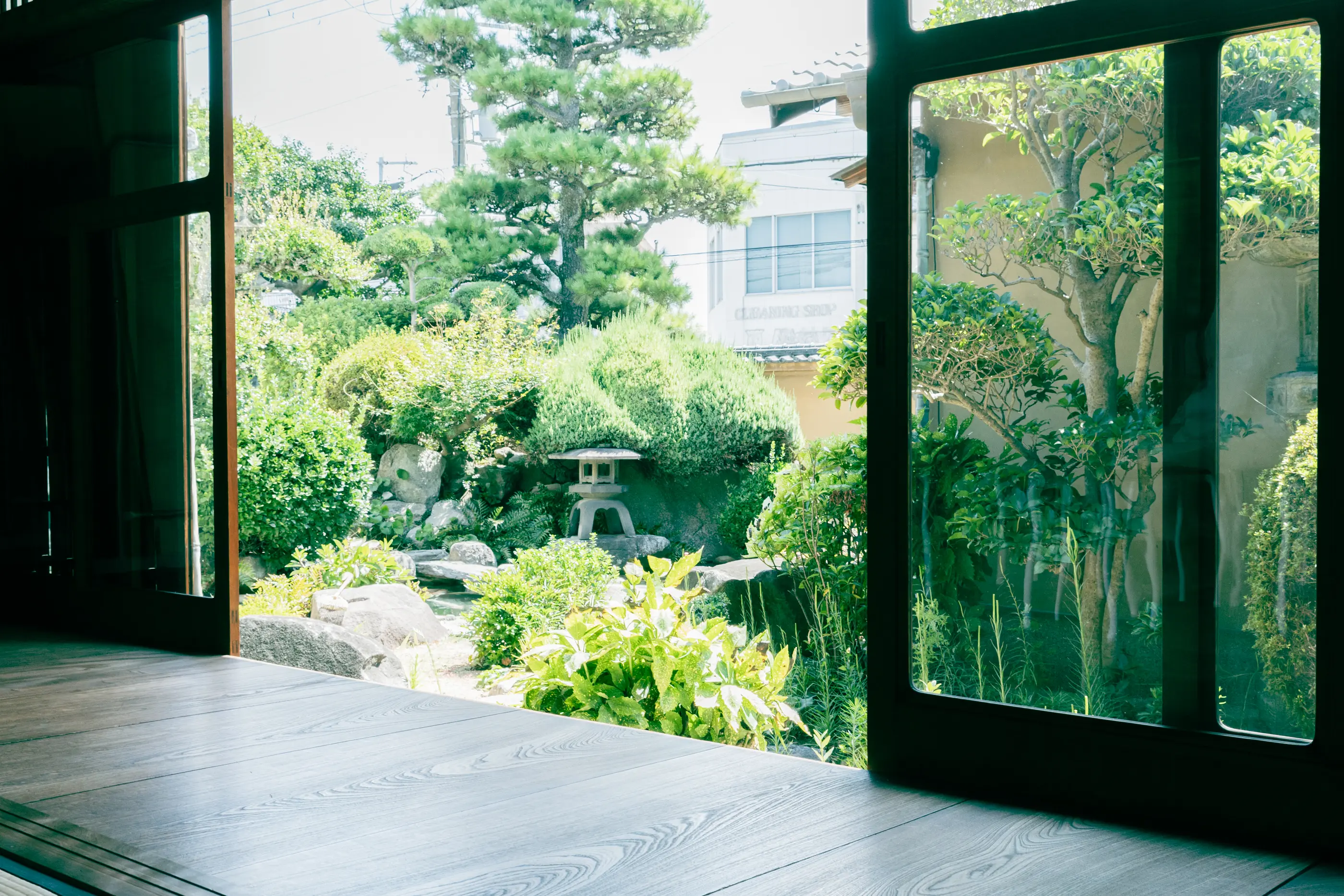
Beyond the veranda connected to the large hall is a Japanese garden, with a charming appearance featuring stone lanterns and a pond with swimming carp.
The glass in the bay window is a distinctive feature. If you look closely, you will see that the surface of the glass is slightly wavy, creating a mysterious sight.
"The glass was made in the Taisho era. Because it was made by hand, the thickness is not uniform, which is why it has that unique wavy pattern," explains Shigeko. In Japan, where natural disasters are relatively common, it is extremely valuable that glass that is over 100 years old has retained its beauty without breaking.

The house also features a Western-style reception room filled with luxurious furnishings, including stained glass and a piano.
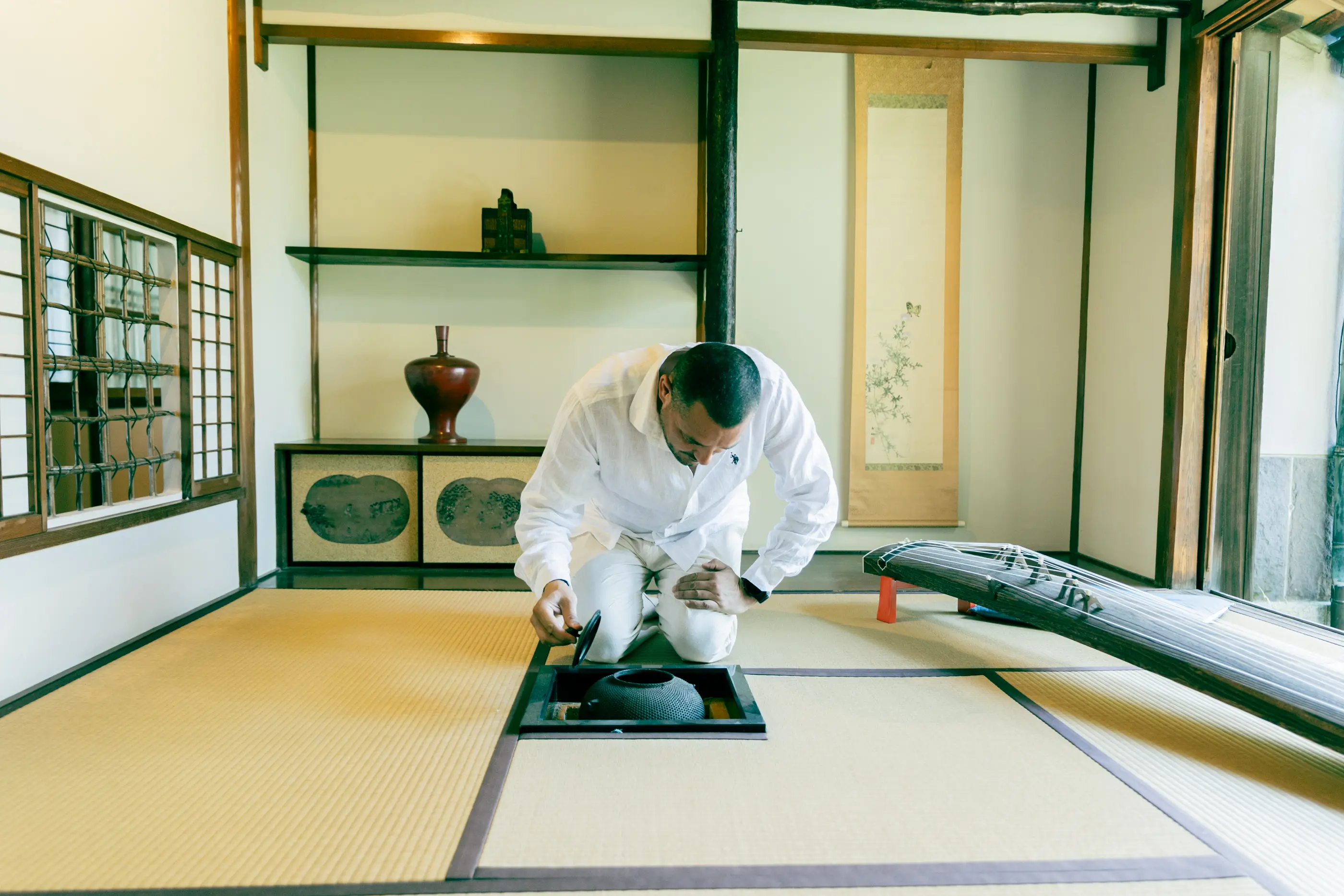
It even has a tea room with a wabi-sabi feel, where generations of brewers may have served tea to their guests.
Despite the recent global matcha boom, this was Giuseppe's first time entering a proper tea room. He looked with interest at the narrow entrance called "nijiriguchi," which was built so that "people of all ranks could enter by bowing their heads," and the hearth buried in the tatami mats.
There is a koto in the tea room, which belongs to the chairman, Shigeko's father. Depending on the timing, they sometimes play the koto for visitors.
Discover the diverse flavors of sake through tasting. Rare sakes are also available for purchase.
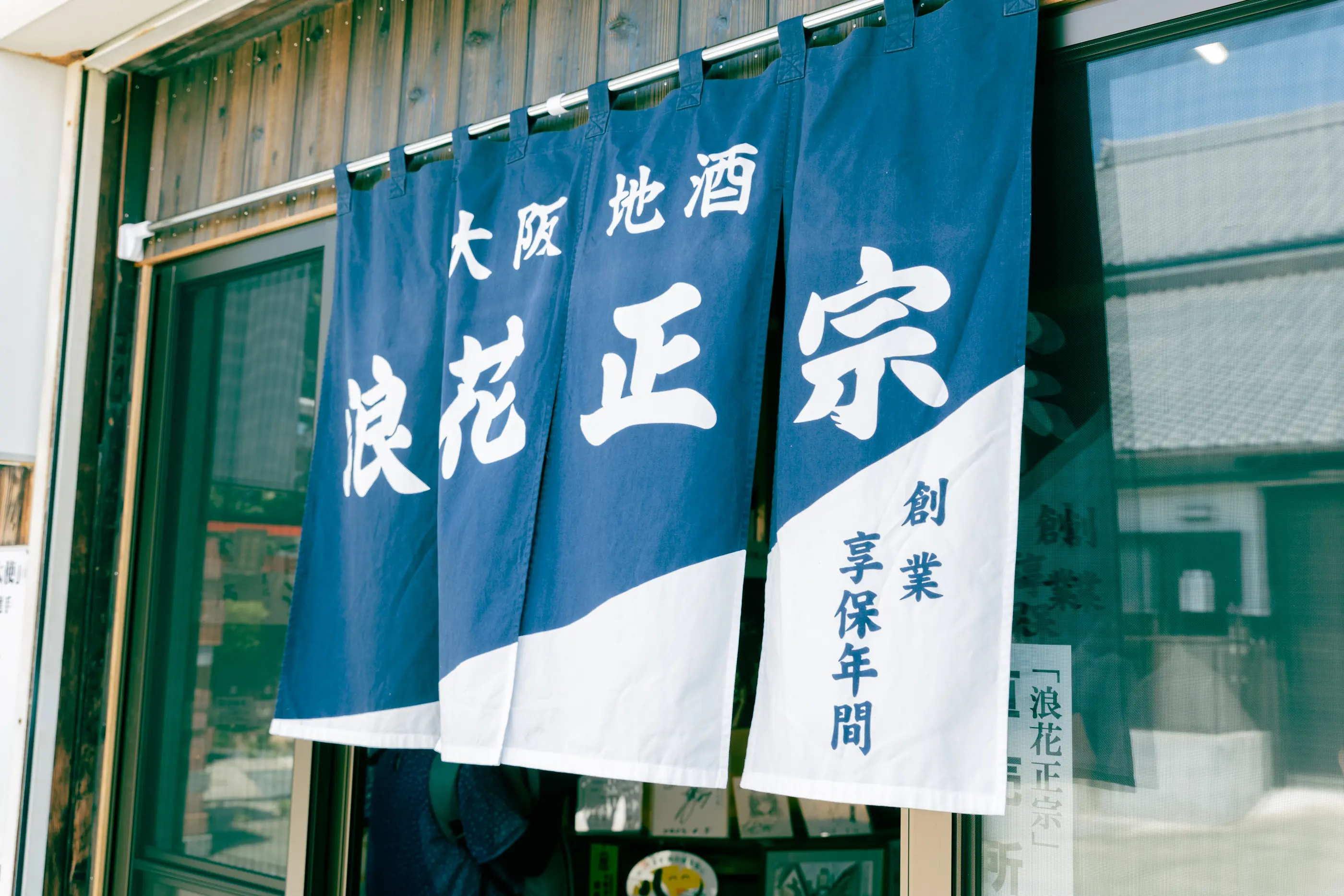
After learning about how sake is made and the characteristics of the land in Hannan City during the tour, you can sample and purchase sake at the direct sales store.
Giuseppe, who is originally from Italy, says that his usual evening drink is wine.
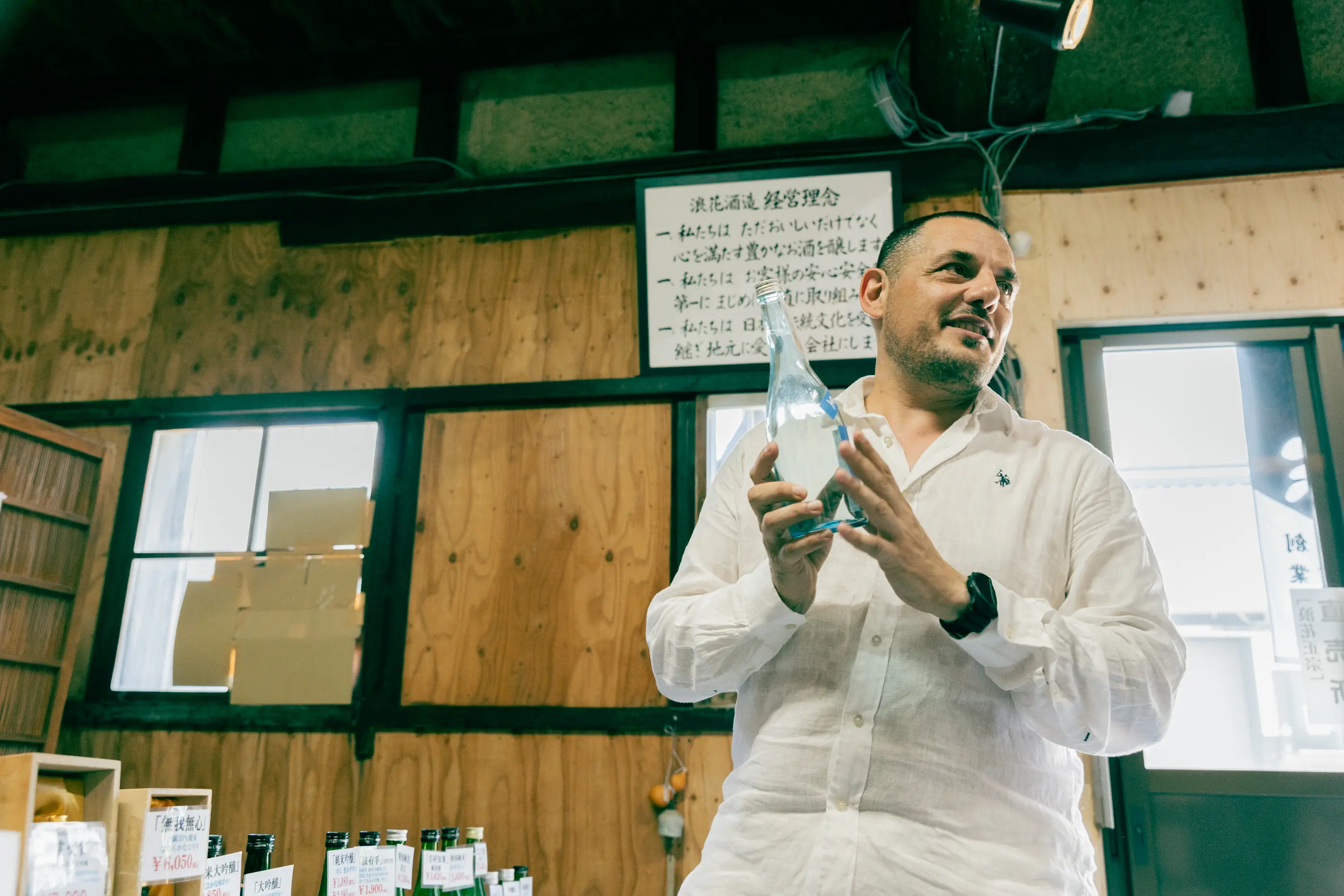
"Sake and wine have a lot in common, but there's still a lot we don't know about them. I'm looking forward to being able to compare the two," he said, his expectations rising at the sight of the wide selection of products lined up.
"You have to be careful not to drink too much," Giuseppe said.

These are the four varieties we sampled this time.
From the right,
- Naniwa Masamune Gold Award Winning Daiginjo Sake
- Boudeishida Junmai Ginjo
- Naniwa Masamune Natsuo Junmai Ginjo
- Yoiyoi Sakura Sparkling

The Namiate Ishida Junmai Ginjo sake that Nariko is holding in her hand is Namiate and Ishida. "Namiate" and "Ishida" are apparently the names of the places in Hannan City where the rice is grown.
We asked Naoko to explain each one to us.
"Naniwa Masamune Gold Award Winning Daiginjo is a sake that can be said to be the culmination of Naniwa Shuzo's brewing techniques. Yamadanishiki rice from Hyogo Prefecture, the king of sake rice, is polished down by 60% to bring out a clear flavor without any impurities. Namiate Ishida Junmai Ginjo is made using local rice. It is a sake that allows you to feel the terroir, using local water and local rice."
"Naniwa Masamune Natsuo Junmai Ginjo is a summer-only sake that is characterized by its refreshing taste. It is a raw sake that has never been pasteurized, so you can enjoy its fresh flavor. Zenyo Sakura Sparkling is a sparkling sake made from ancient rice grown in the nearby city of Sakai. Because it uses ancient rice, it is characterized by its juicy acidity and sweetness."

"!"
Giuseppe put it in his mouth and was amazed at the breadth of flavor.
"Even though this Daiginjo is made only from rice, it has a sweetness and aroma like peach! It's absolutely delicious. It has a fruity and delicate flavor, so I would like to enjoy it as an after-dinner drink to relax. The "Namiate Ishida" sake, which is entirely locally produced, has a medium body, which is what we would call a wine. It would go well with meat dishes."
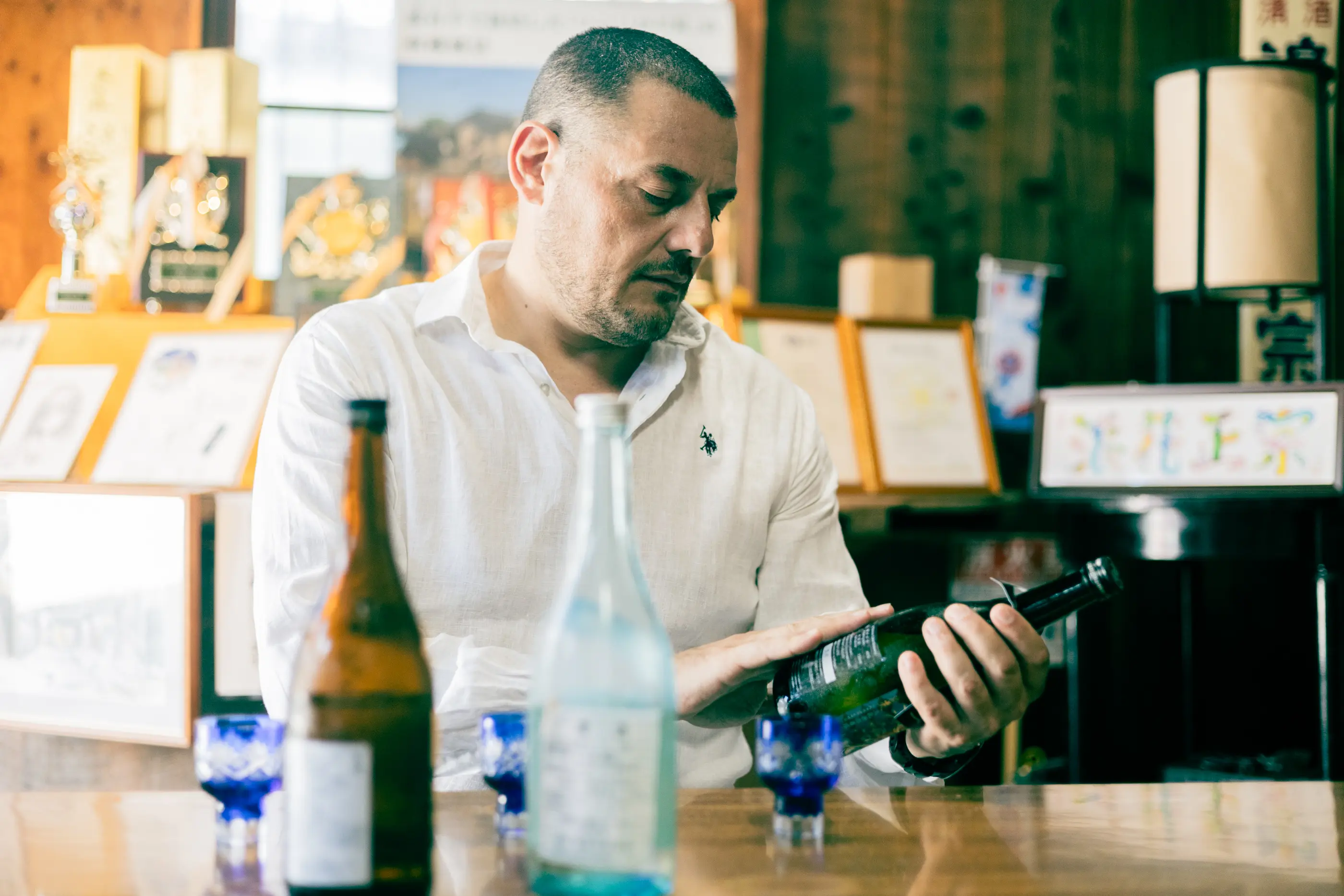
"As you introduced, the blue-bottled Naniwa Masamune Natsuo Junmai Ginjo is very refreshing and not too strong, in a good way! I would like to pair this with fish dishes. It seems to go well not only with Japanese food like sushi, but also with Western dishes like carpaccio."
He picked up each bottle and gulped down the drink. Each one had a distinct flavor, and Giuseppe couldn't stop tasting them.
"Zenyo Sakura Sparkling is exactly what they call Prosecco in Italy. It has a sweet and sour, sweet and sour, gorgeous aroma. I think it's perfect for starting a party or for a cheerful drinking session. If you're not careful, you could easily drink too much!"
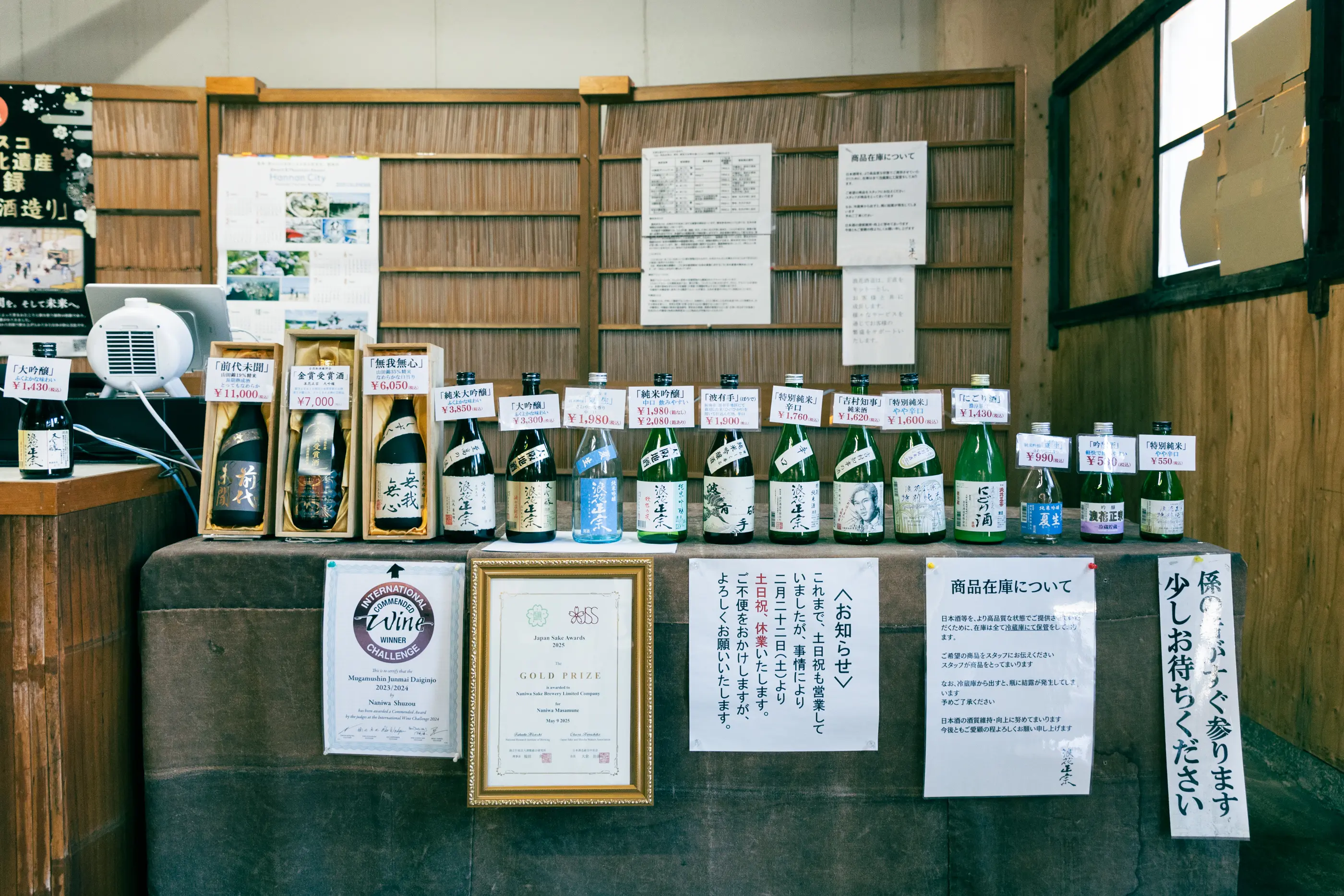
"Even with the same water, different rice and polishing methods can produce such a wide variety of flavors. However, it's not something that can be achieved automatically; achieving the desired flavor depends largely on the skill of the brewer," says Shigeko.
Although this is a traditional sake brewery where almost all of the sake brewing is done by hand, they are incorporating new ideas to pass on their techniques, such as using AI to accumulate brewing data, and are working hard to pass on the taste of Naniwa Sake Brewery to the next generation.

It was interesting to learn that the concept of terroir is applied to sake, just like wine. It was a great experience to be able to see the actual sake production site, guided by a member of the brewery. The sake I drank afterwards tasted completely different because I had toured the brewery!

A stroll along the old road where the good old townscape remains
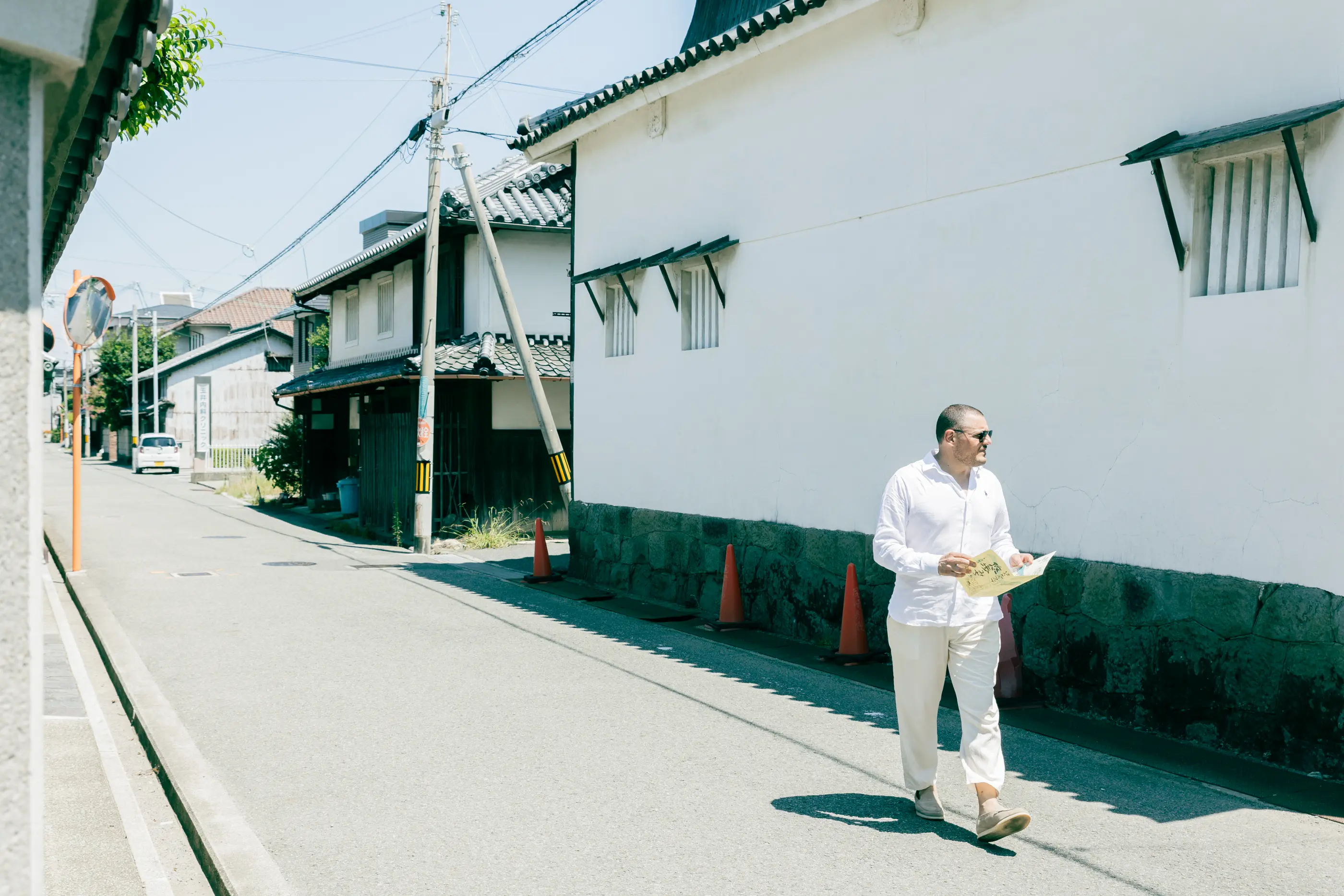
After leaving the brewery, take a stroll around the surrounding townscape.
This area is called Hama-kaido, a coastal road that connects Izumisano and Sennan to Kishu and Wakayama. Old buildings that give a sense of the bustle of the past still remain along the road.
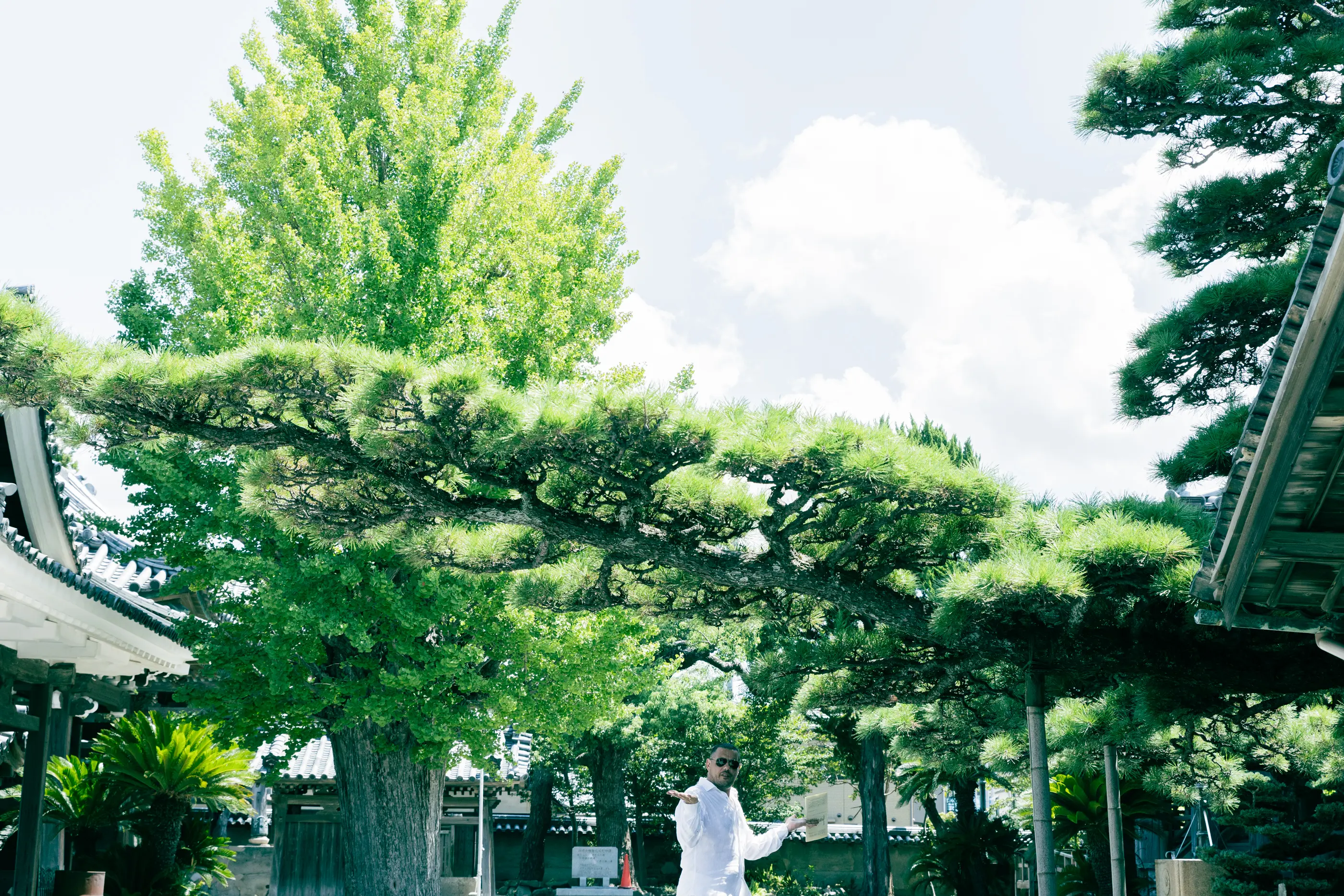
I was amazed by the magnificent pine tree that stretched across the temple grounds!

At the end of the road, there is "Shimizu Kobo Daishi," which, like the well at Naniwa Sake Brewery, is a spring overflowing with fresh water called "Kobo Daishi's Water," even though it is located along the coast.
After taking a bite, Giuseppe said it was "rich in minerals and had a delicious taste."

We also stopped off at a beach called "Ebinohama." This is not a swimming beach, so the sand isn't well maintained, but it is an important beach for locals, as it is where a Shinto ritual is held during the autumn festival, where a portable shrine is carried into the sea.

When I was in Italy, I often went to the sea during vacation season, so I'm very familiar with the sea. This area has been bustling for a long time. The rows of old-fashioned white-walled buildings were beautiful.
Seafood and mountain produce! A shop where you can find all the delicious things from Hannan City
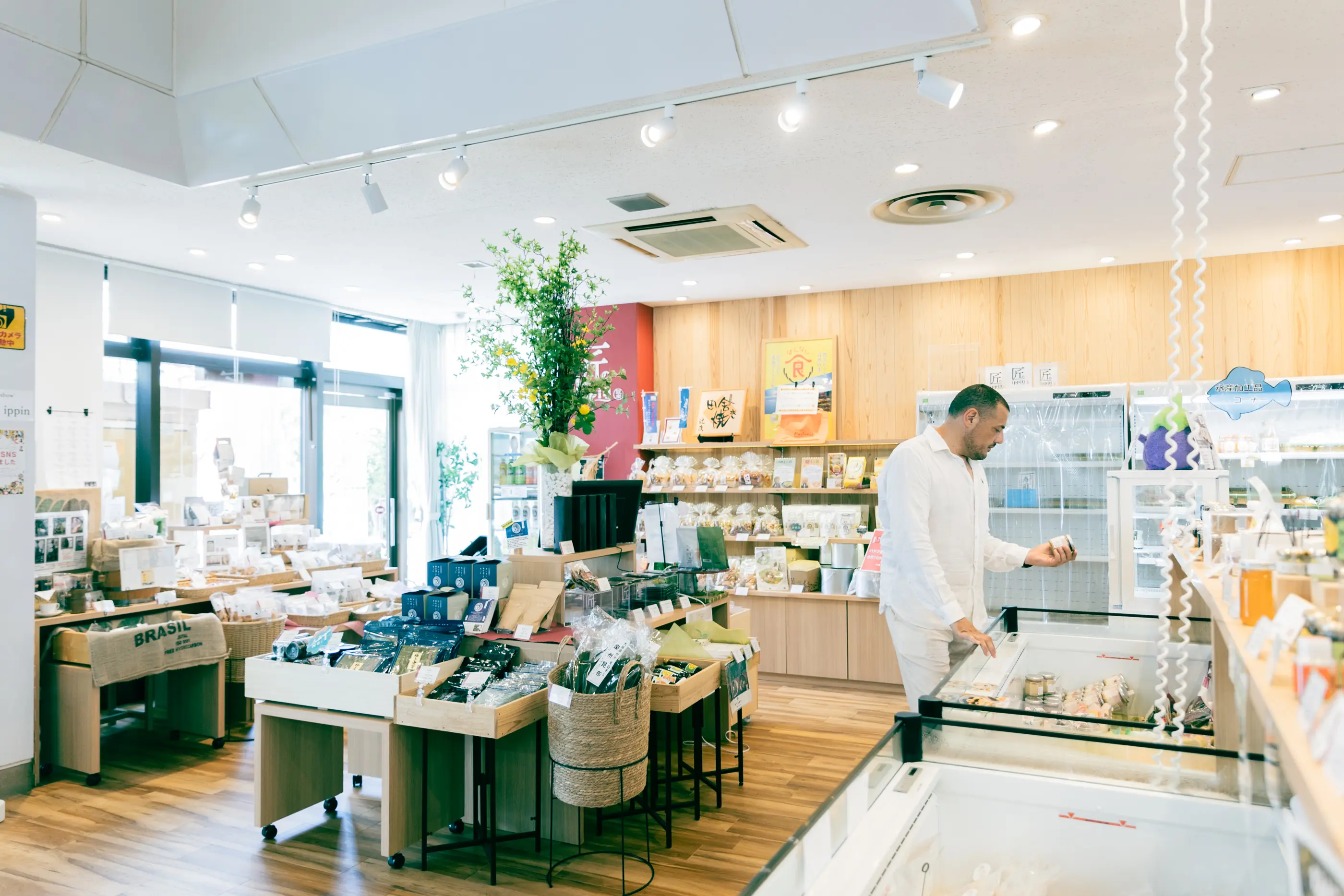
A few minutes' walk inland along the highway will take you to the Hannan Brand Hall Takumi no Ippin. Operated by the Hannan City Chamber of Commerce, this shop sells a variety of local specialties.

Although it is not well known nationwide, the seas of southern Osaka, including Hannan City, were once a major producer of nori seaweed. However, due to aging and declining harvests, the remaining nori seaweed farmers are moving out of the city.
Although there are now only three businesses left, delicious seaweed is still available.

Hannan City is a thriving city in terms of vegetables and livestock, producing not only Mizunasu eggplant, a major brand in Senshu, Osaka, but also Naniwa Kuroushi beef, a brand of beef. If you stop by here, you can buy all kinds of local delicacies from land and sea.
Local fresh produce doesn't make a great souvenir, but if you're staying at a lodging with a kitchen, enjoying cooking with local ingredients can be one of the joys of traveling.

With "SUSHI" becoming more popular around the world, it's great to be able to buy Osaka nori seaweed to take home. It would make a great souvenir. Apparently the area around Hannan City is famous for "mizunasu," an eggplant that tastes like a pear, and I'd love to try it someday. I was surprised to find that they also have mizuunasu jam.
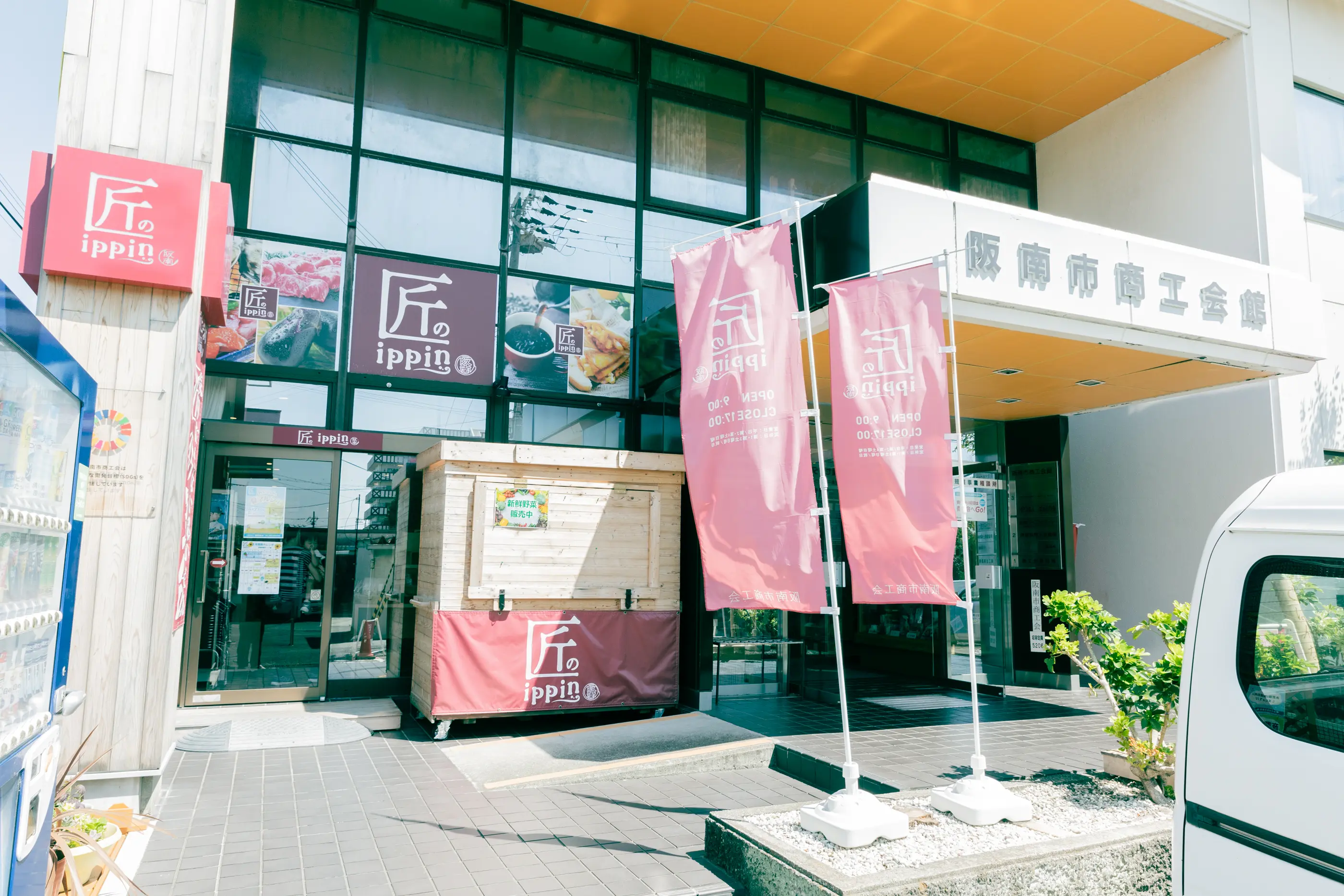
Enjoy Naniwa Brewery and local fish at a local izakaya

The best way to end a trip is with something delicious! After a stroll around the neighborhood, we headed to Saisho Kenmi Ikikomi, an izakaya restaurant near Naniwa Brewery.
This is a restaurant recommended by Nariko, and apparently you can also try Naniwa Sake Brewery's sake here.
Naniwa Brewery's sake is rarely sold outside of the prefecture, so if you can't bring it home with you due to accommodation or travel arrangements, it's a good idea to enjoy it with your meal at the restaurant.


The tatami room was packed with festival goods from the local youth group. The owner, originally from Osaka, had a connection to Hannan City and has been there for 21 years.

The restaurant's top recommendation is "Live-killed conger eel tempura covered in green onions." With a mountain of green onions, you can't see what's underneath!

The sake paired with the dish is, of course, from Naniwa Sake Brewery. This brand, "Sakamatsu," is a limited distribution brand and can only be tasted in very limited places.

Giuseppe stuffs his face with "Live-caught conger eel tempura covered in green onions."
"The fluffy conger eel and the crispy tempura batter, accented with the spicy flavor of the spring onions, make it very delicious," he said, apparently enjoying the dish.
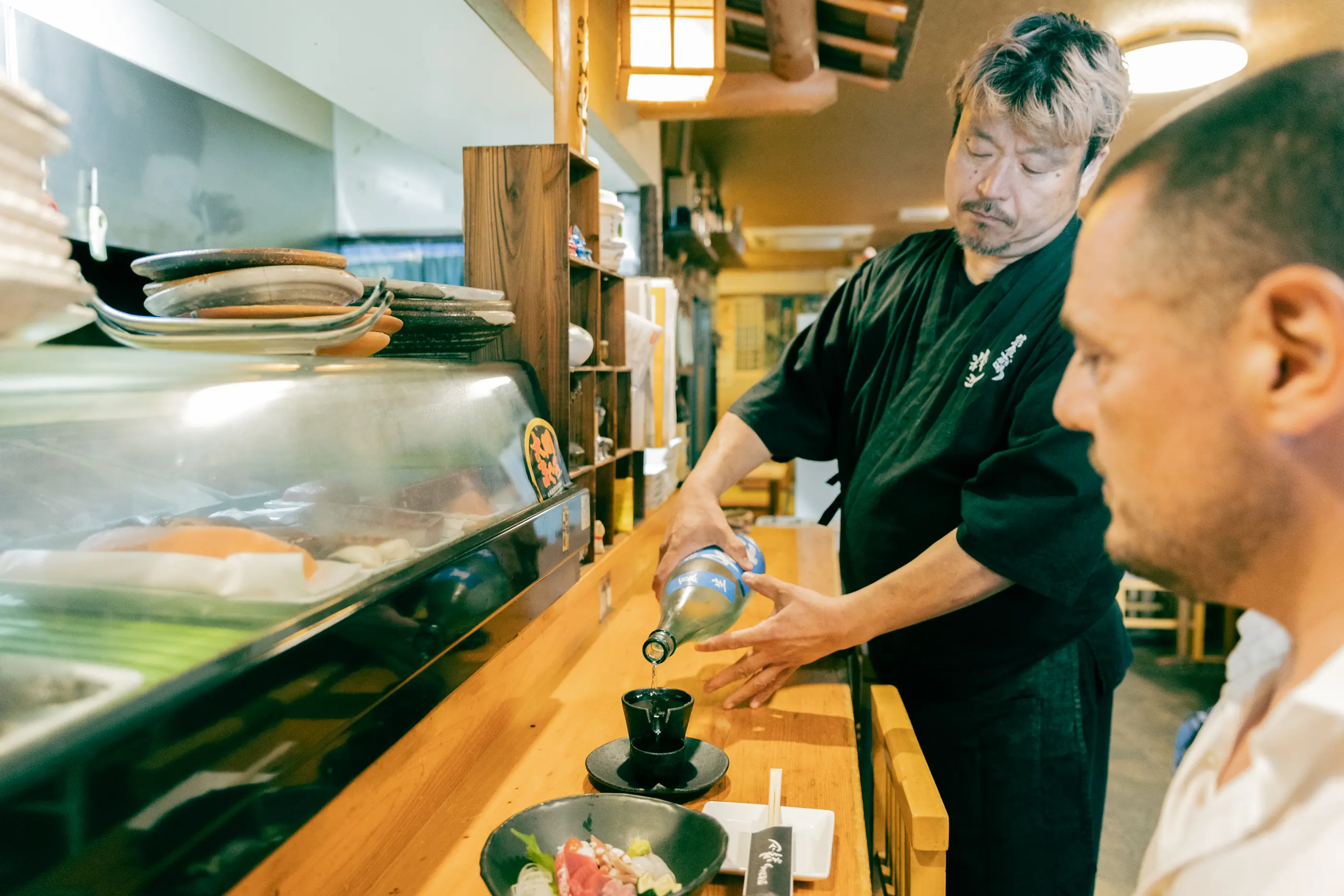
"This area is a coastal town, so many people are particular about the freshness of their fish. One of the things we focus on is how to serve fresh seafood in a delicious way," says the owner. The conger eel, Spanish mackerel, and sashimi platter of octopus and conger eel that we were served were all caught in nearby waters.
Usually, fish auctions are held in the early morning, but apparently the fishing ports in this area have "daytime auctions" that take place in the afternoon. It's surprising that the fish that are landed in the afternoon are lined up in restaurants and homes just a few hours after they've been caught.
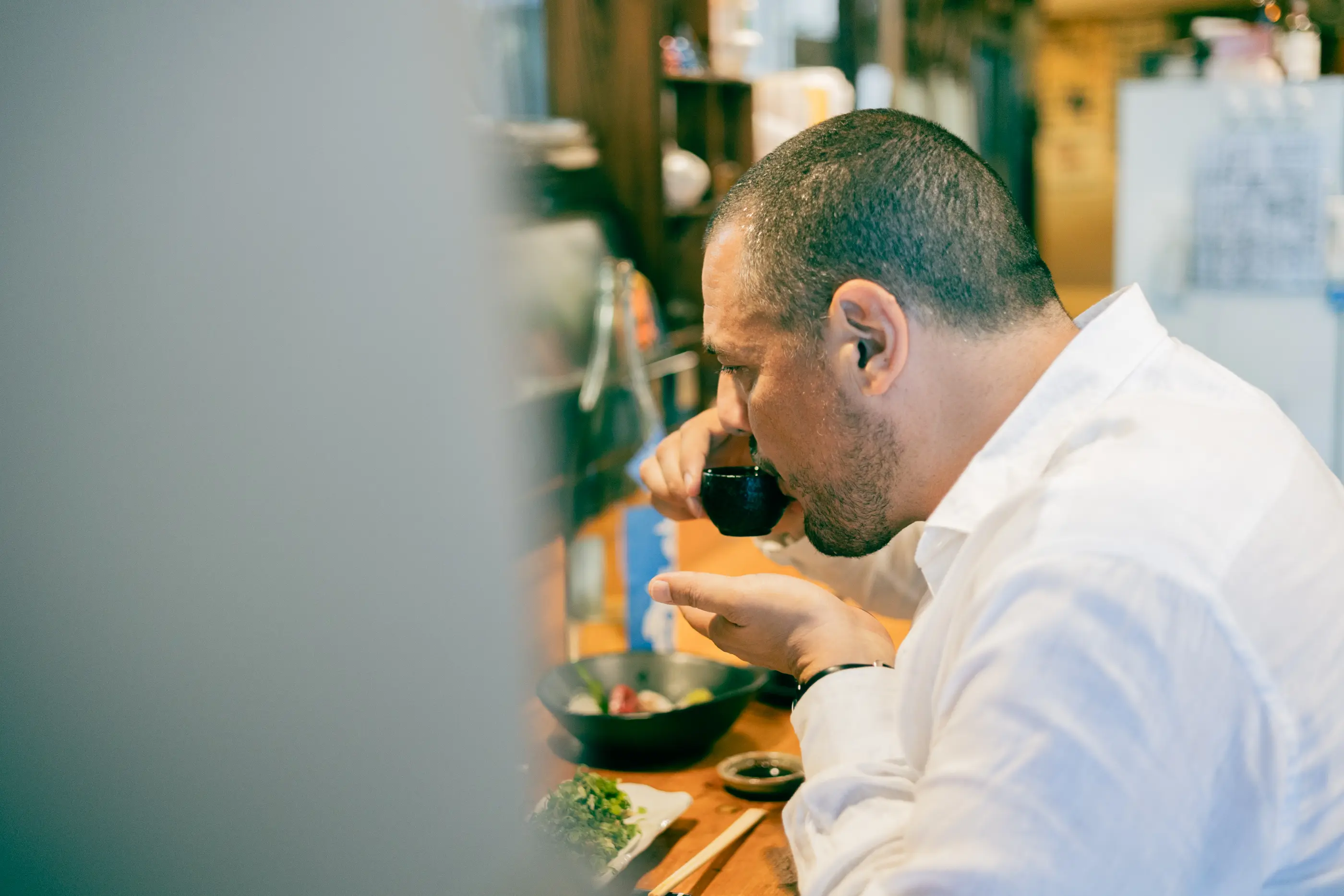
The food was unpretentious yet you could sense the owner's skill in satisfying the locals, and Giuseppe's sake cup was quickly emptied!

In Italy, there is a deep-fried dish called fritto, which is very similar to tempura, but the "Live-caught Conger Eel Tempura Covered in Green Onions" is topped with plenty of green onions and a soy-sauce-based sauce, and goes perfectly with sake! It's a rich and enjoyable luxury to be able to enjoy locally caught fish at a local restaurant with local sake.

"This flavor can only be created in this region" - A journey to experience the rich sake and food culture of Hannan City

"Although there are more and more opportunities to obtain sake in Italy, there are still import costs and the variety is limited. I learned a lot by enjoying different flavors of sake while comparing them," said Giuseppe.
The real joy of visiting a sake brewery is being able to see, hear, and taste the high level of skill that allows a single brewery to produce a wide variety of flavors, as well as the unique characteristics that each region brings.
Why not discover the charm of alcohol, an essential part of Japanese food and communication, in Hannan City?
Photo: Yuji Takatsu
Edit: Yuji Takatsu
Direction: Ningen Henshusha

